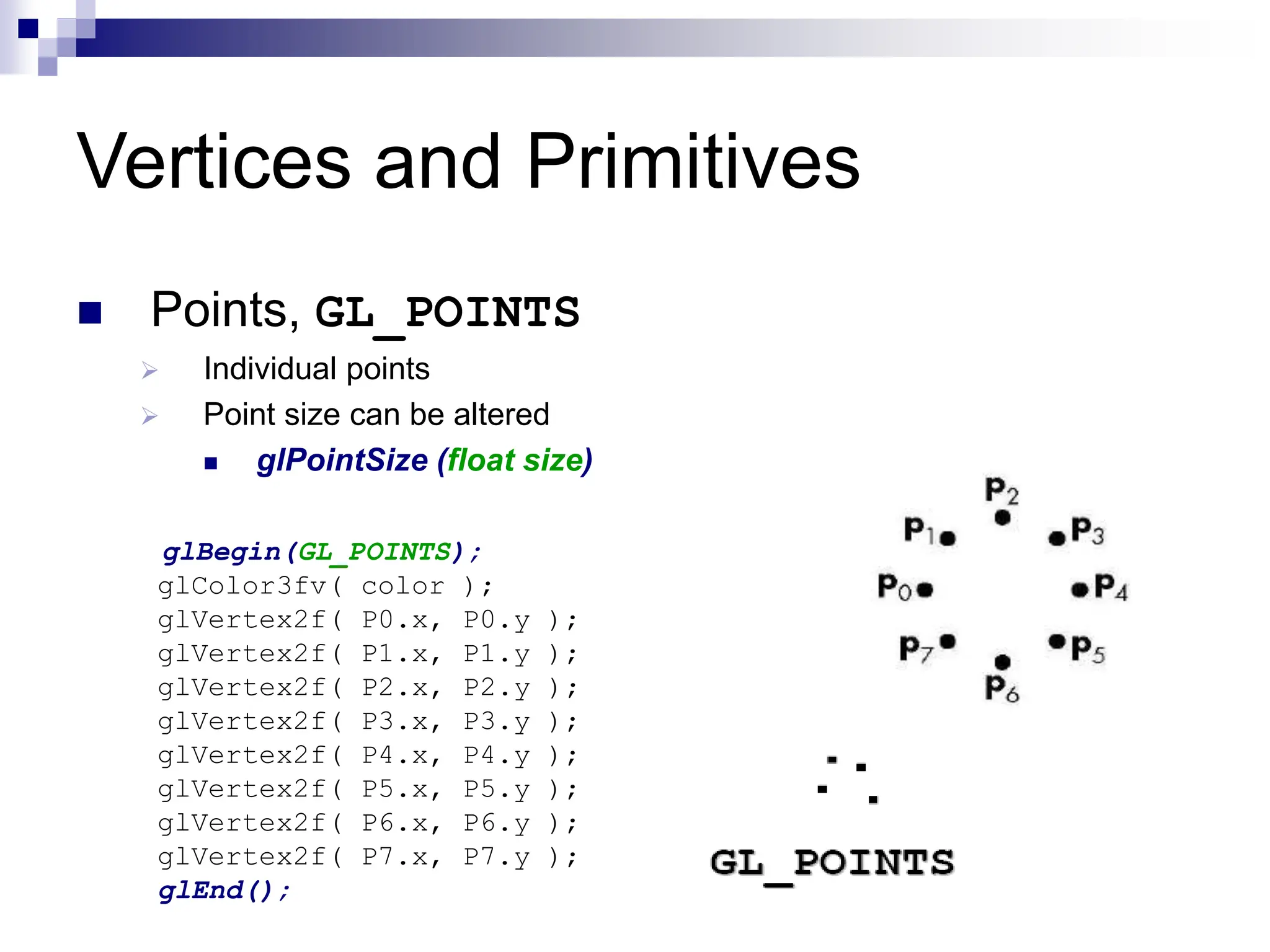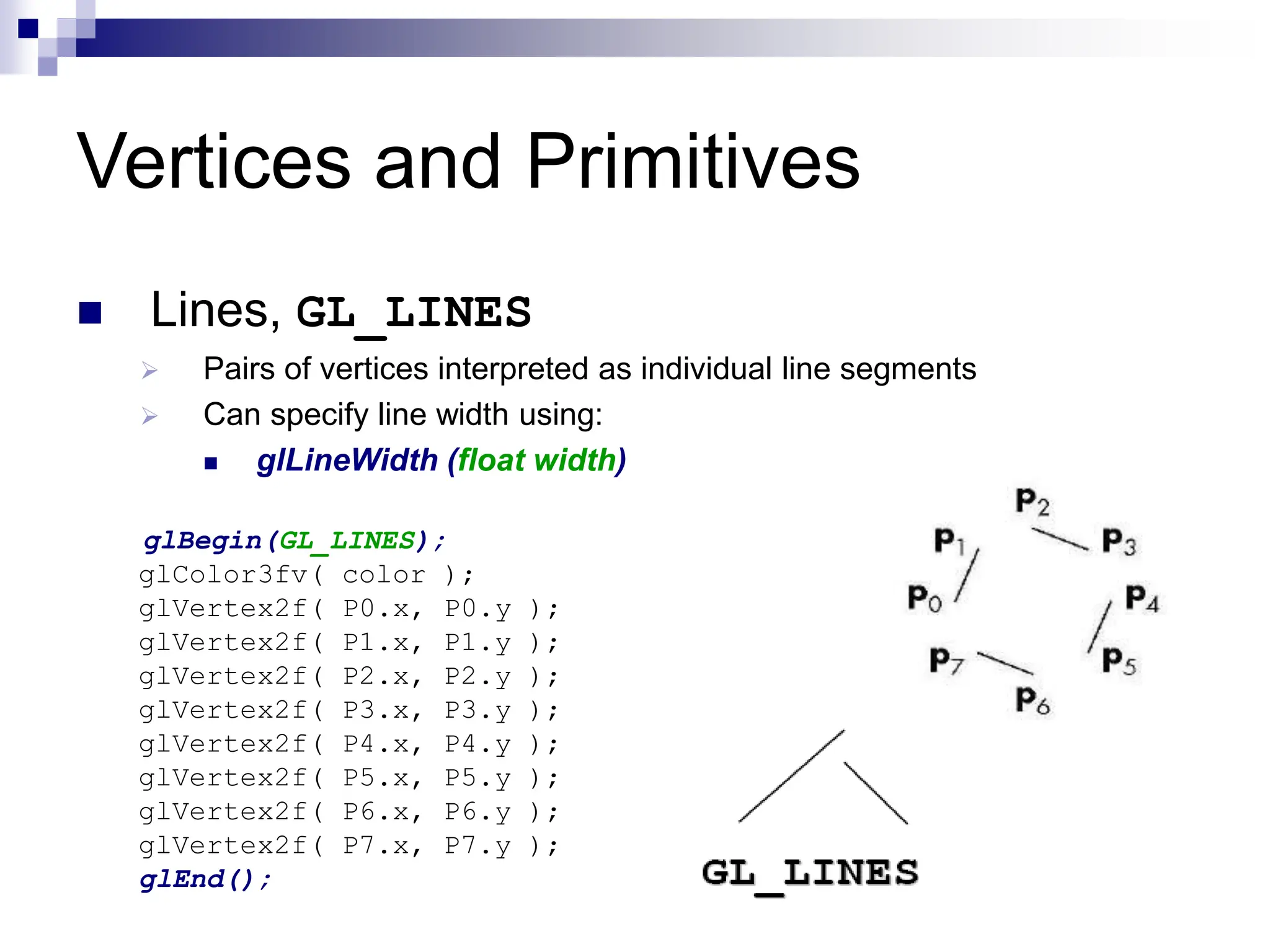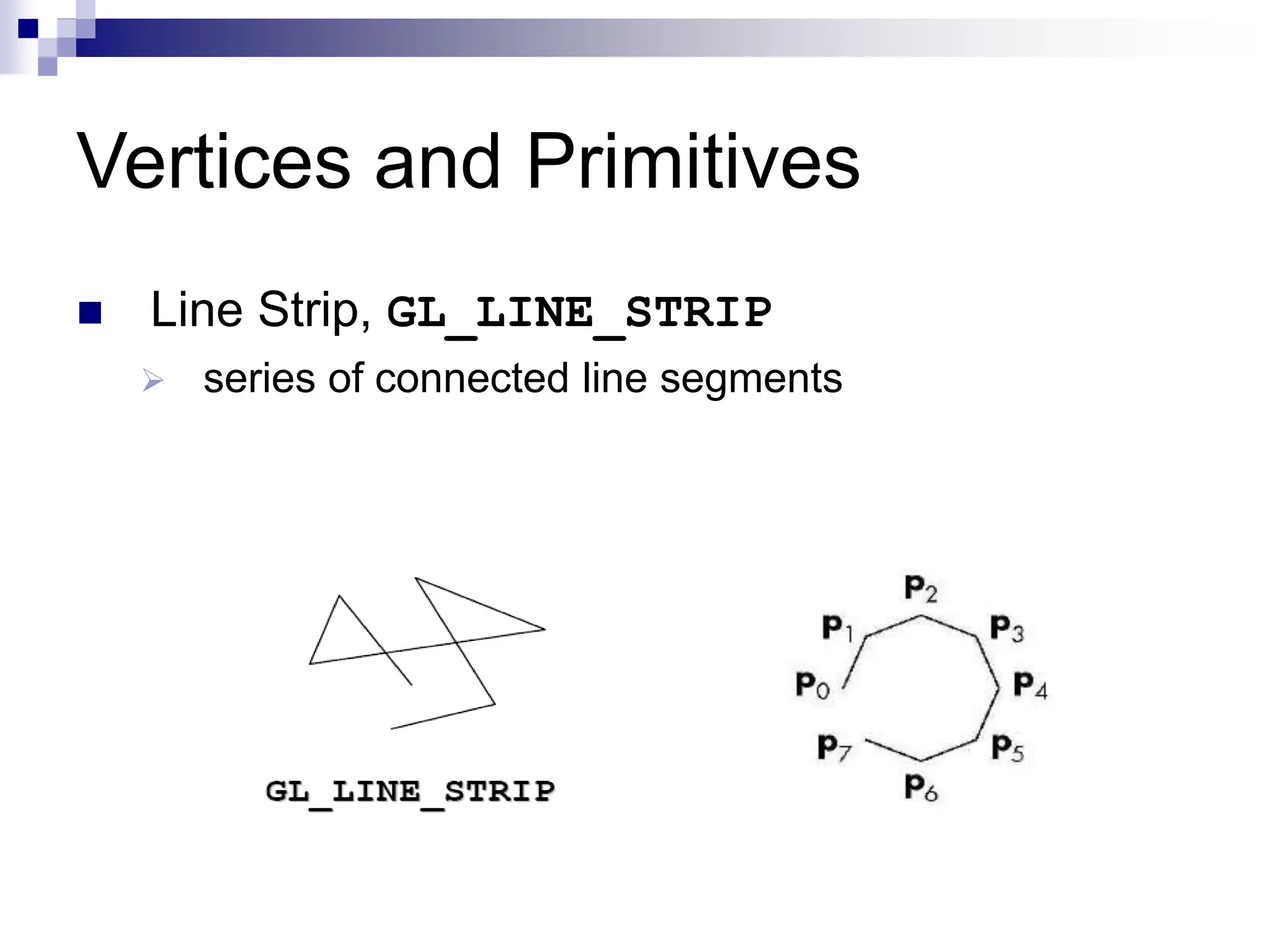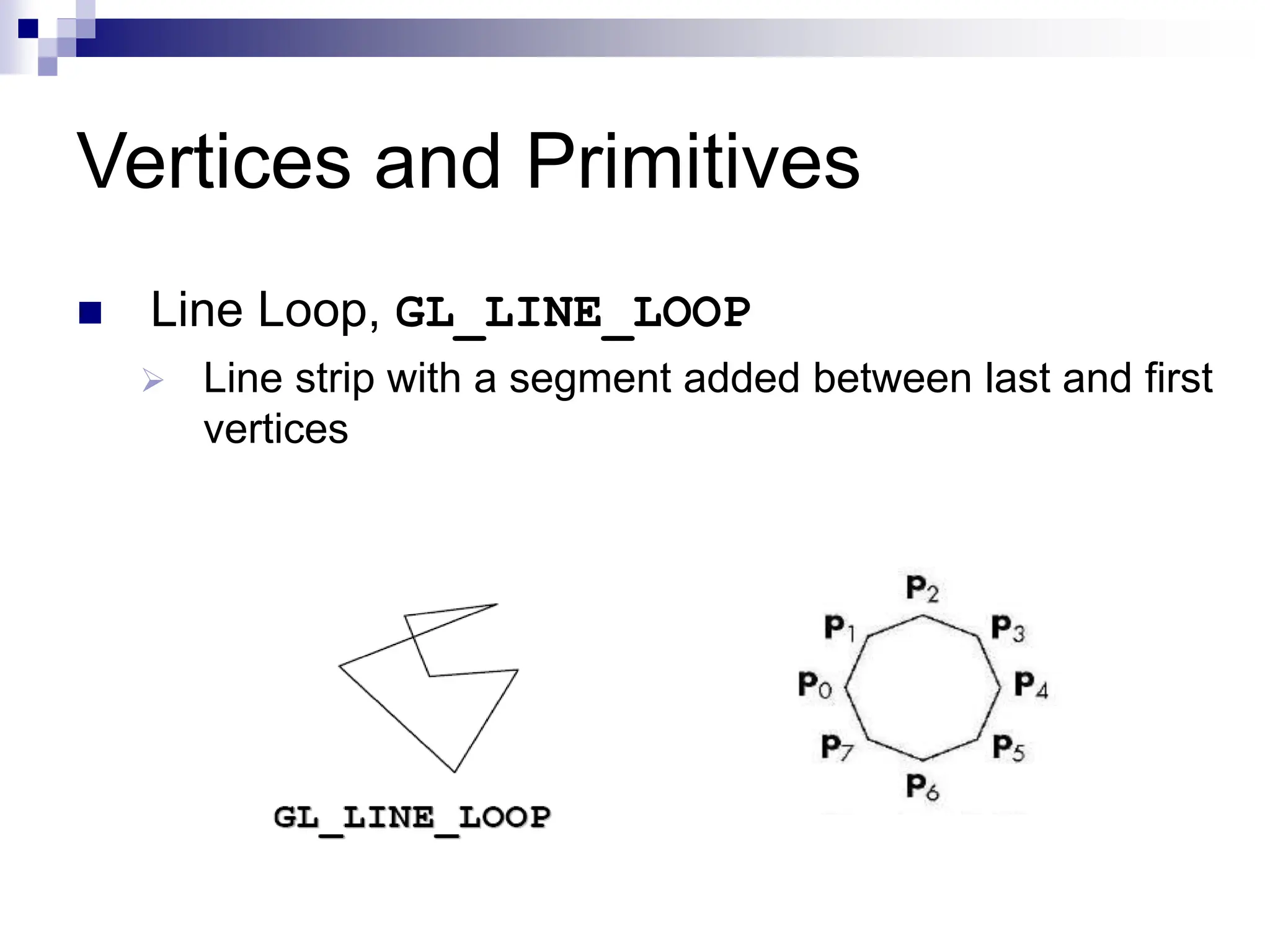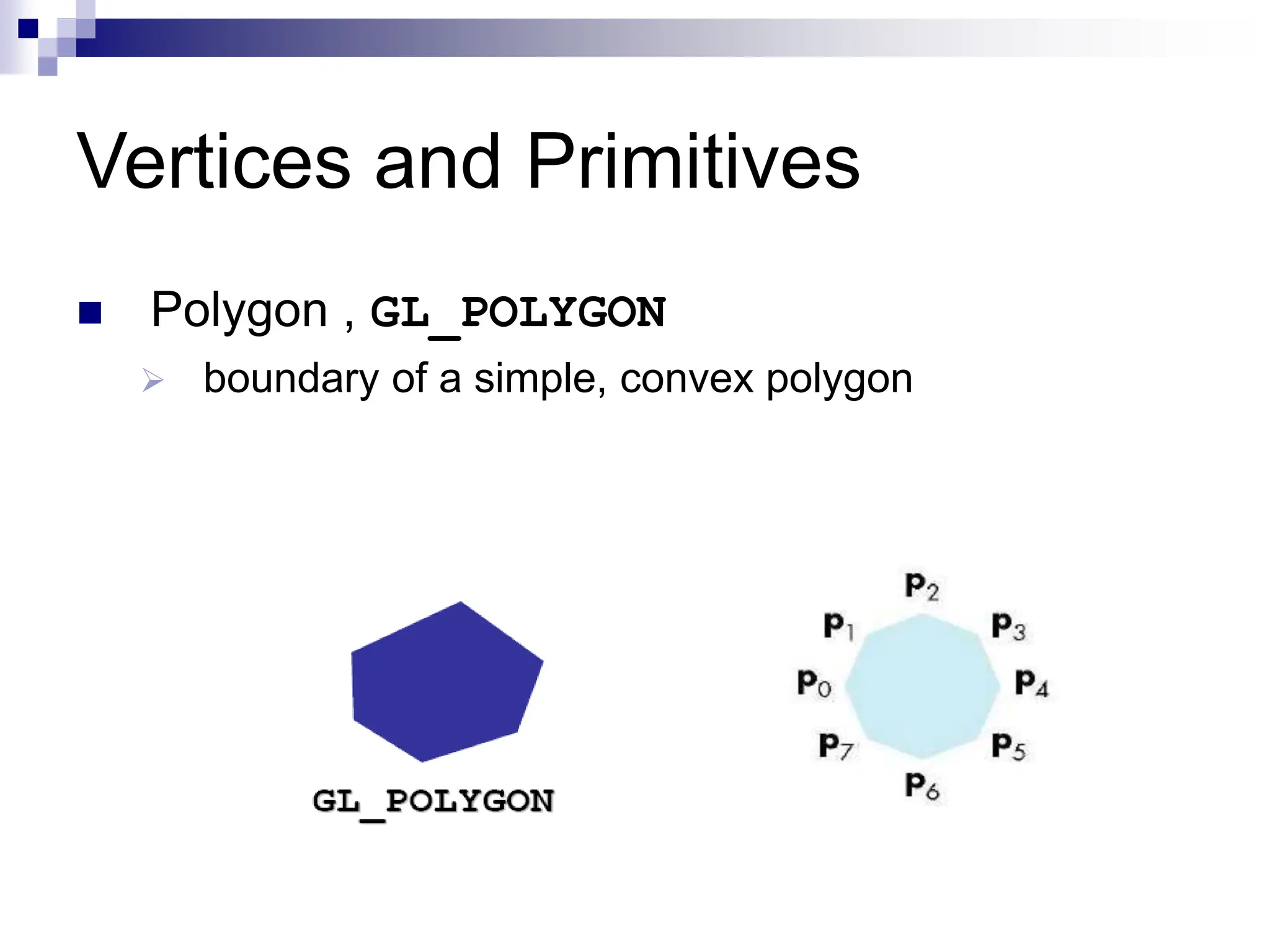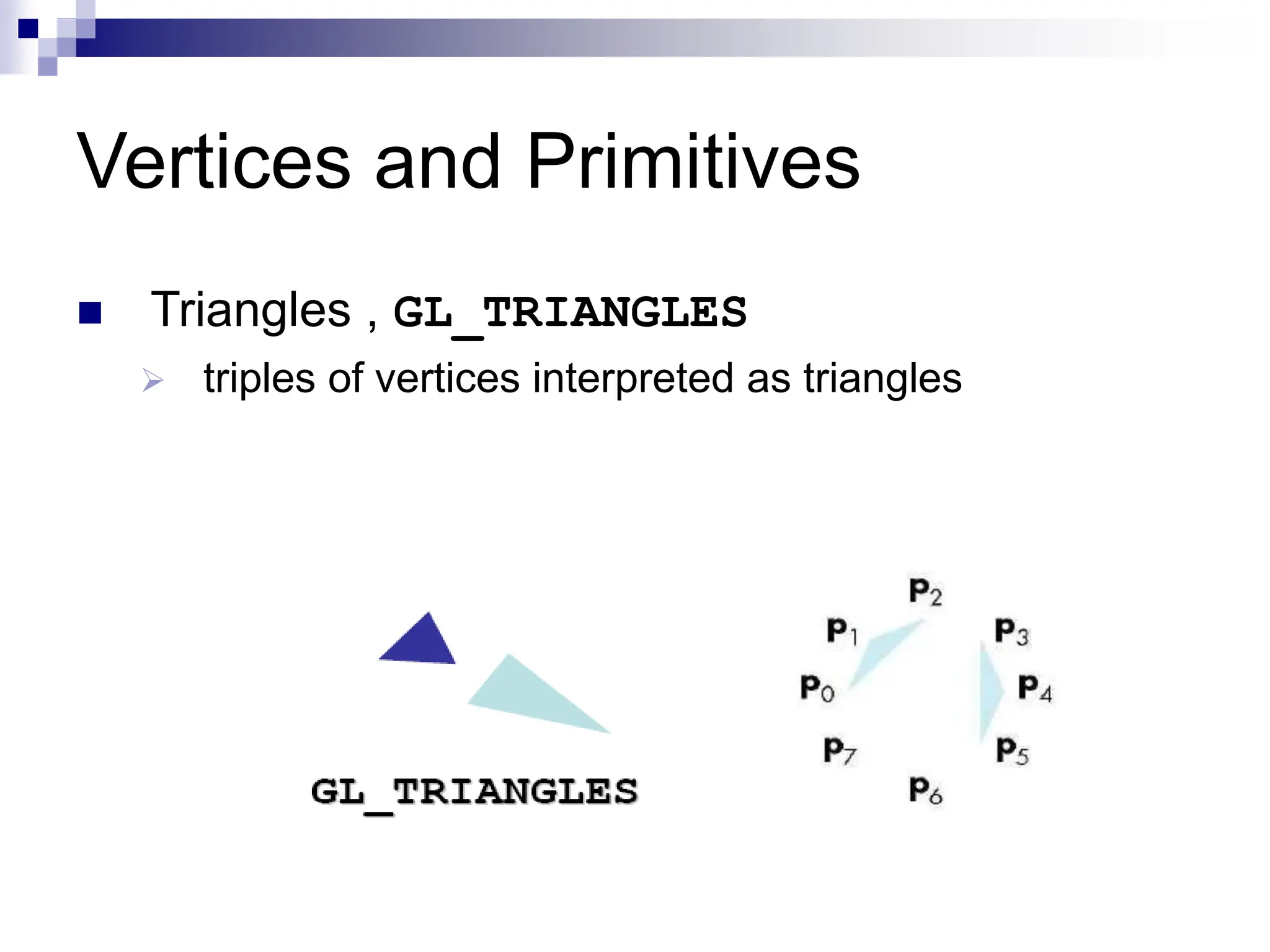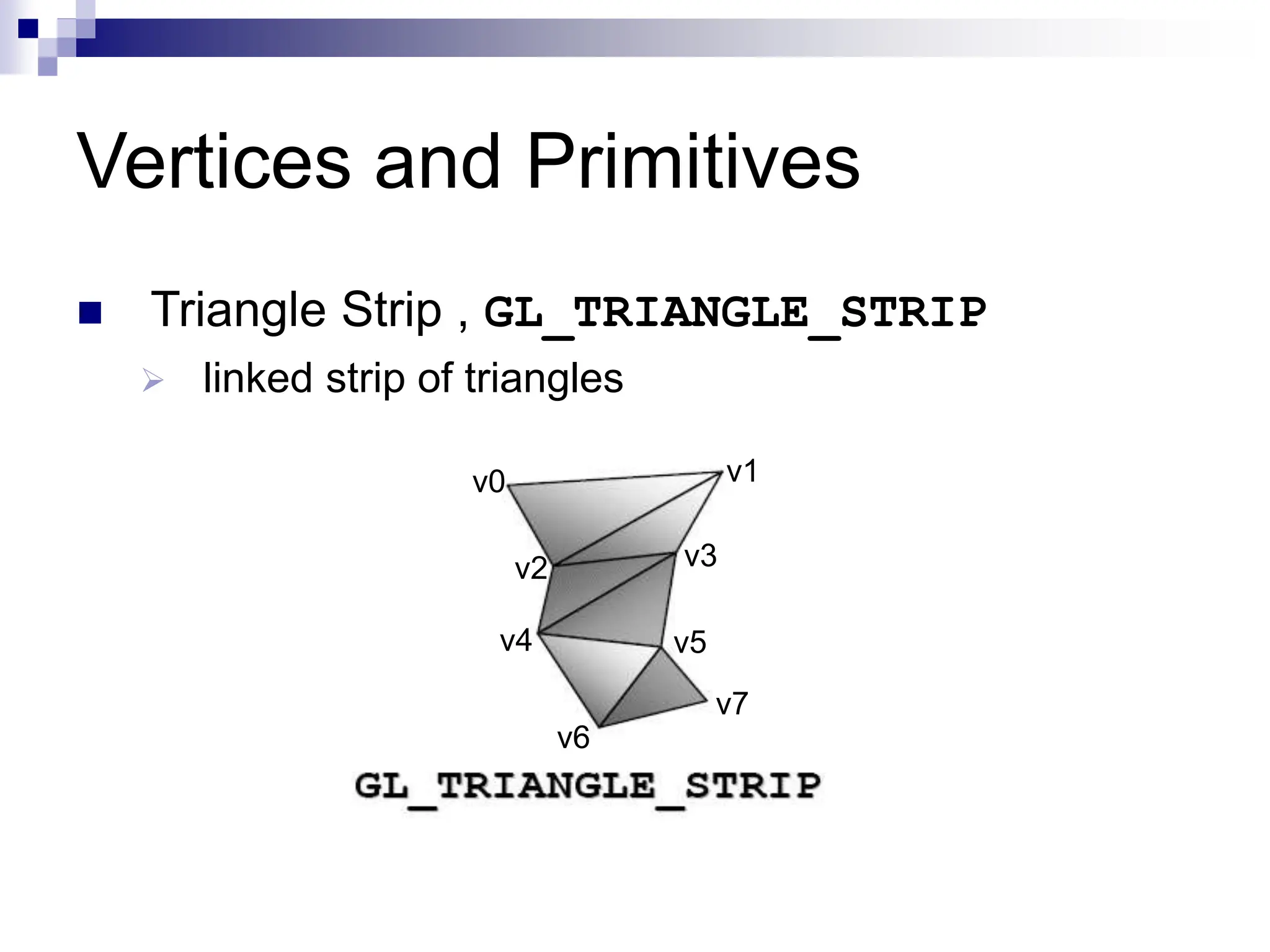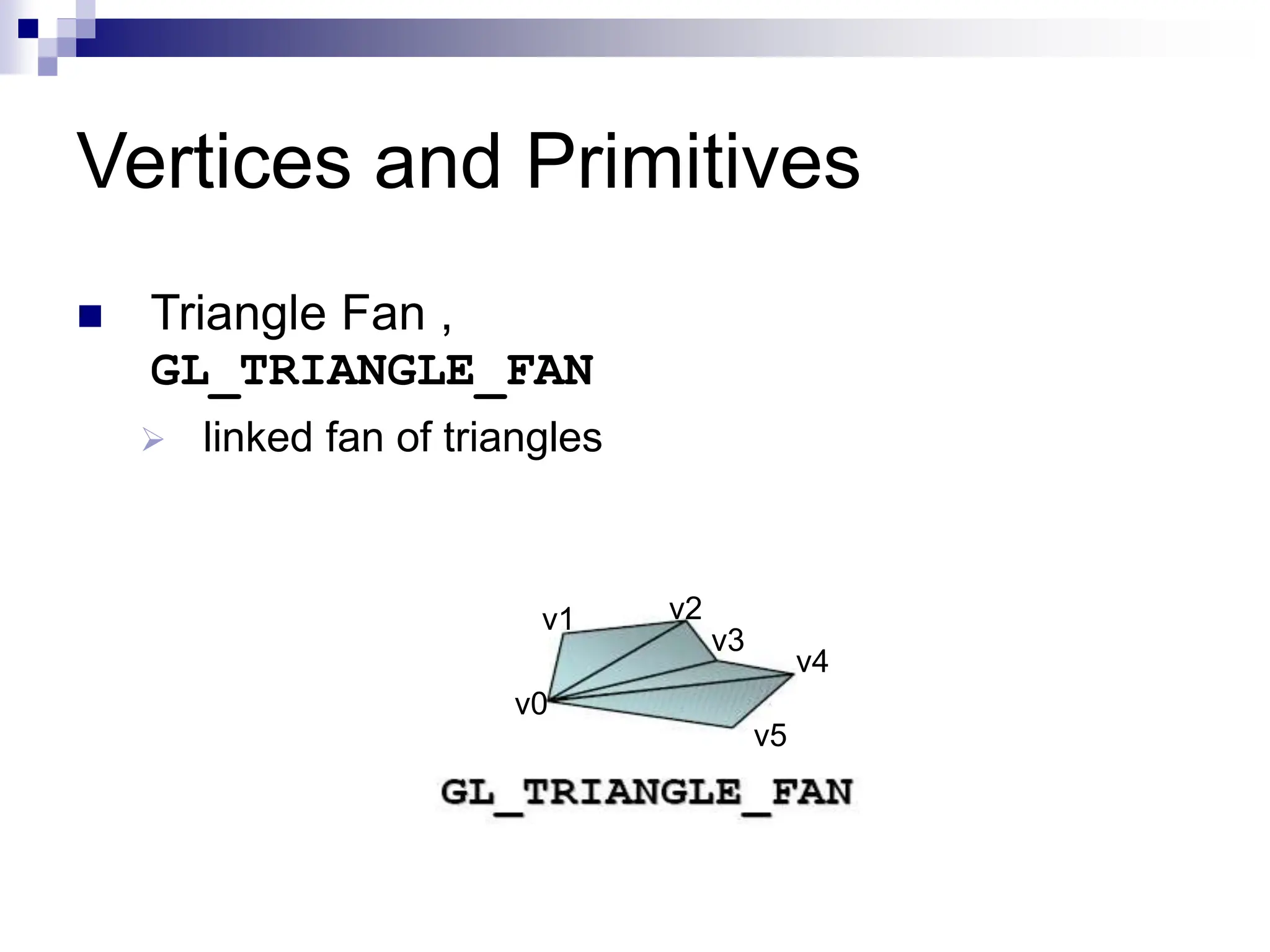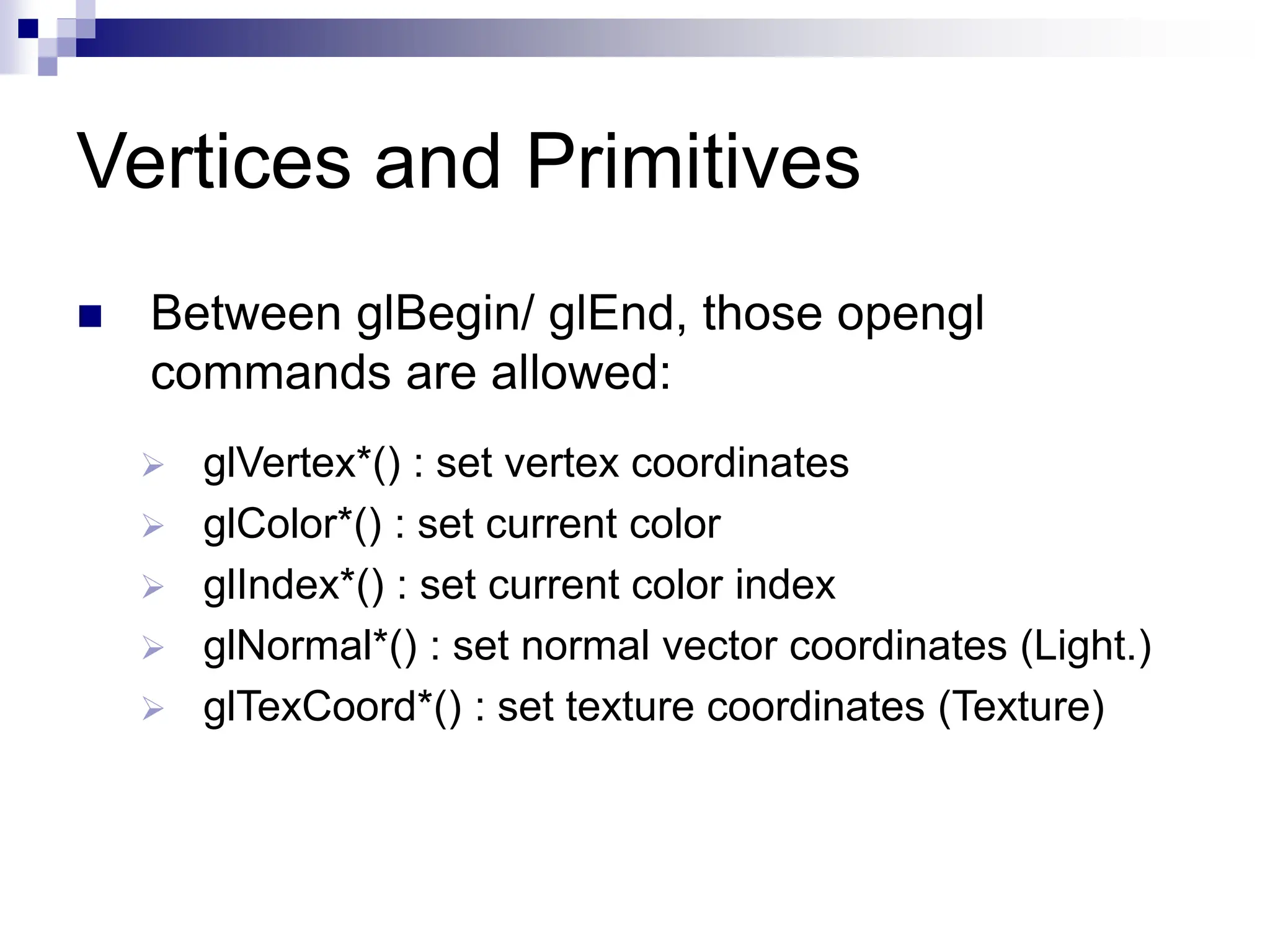OpenGL is a graphics rendering API that can be used to render 2D and 3D graphics. It uses graphics primitives like points, lines, polygons, and textures to render high-quality images. GLUT is a library that provides windowing and input functions to simplify OpenGL program development. An OpenGL program initializes graphics state, registers callback functions for events like display and input, and enters a main loop to process events. Within callbacks, primitives are specified using vertices between glBegin and glEnd commands to render graphics.
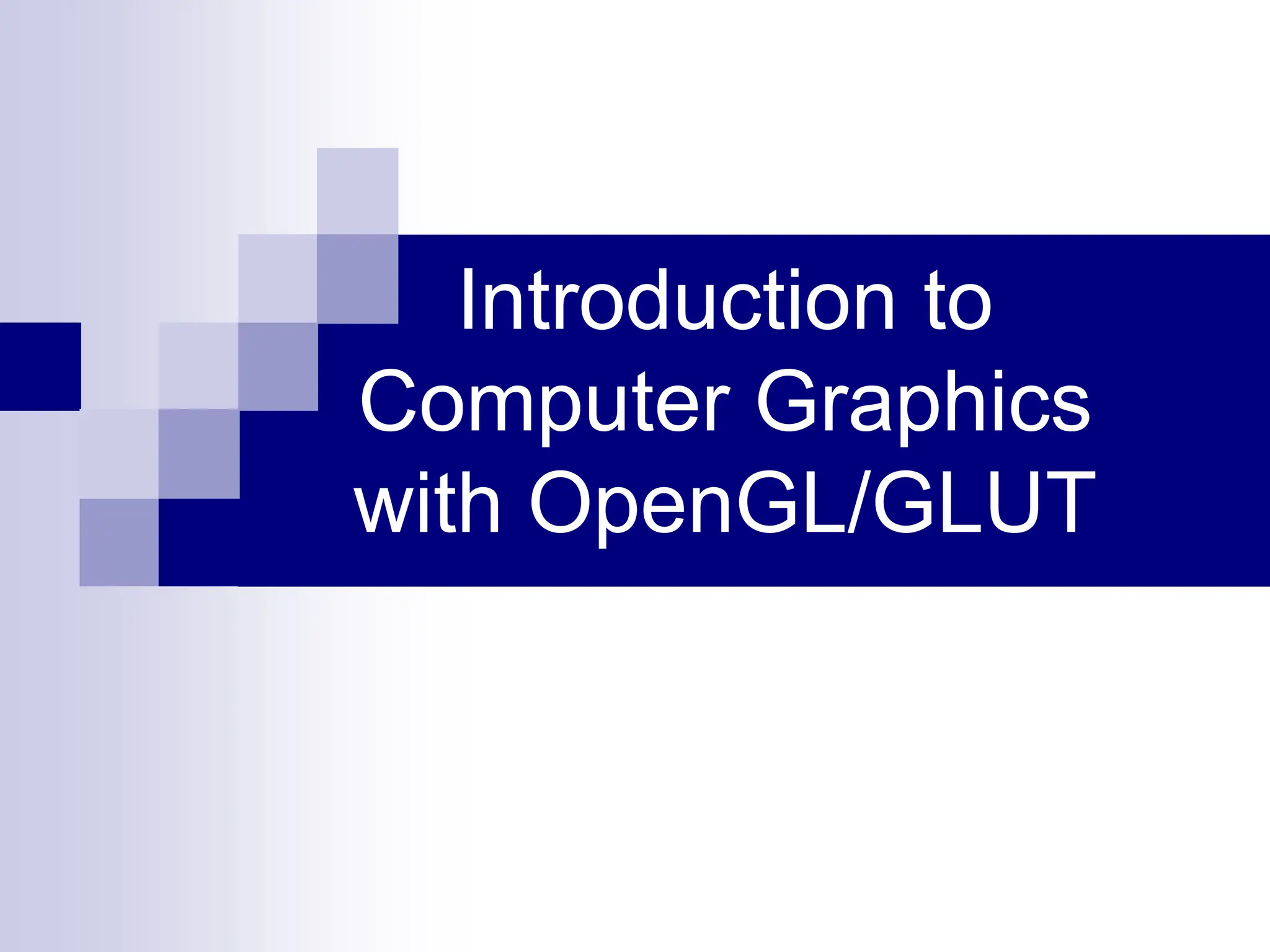
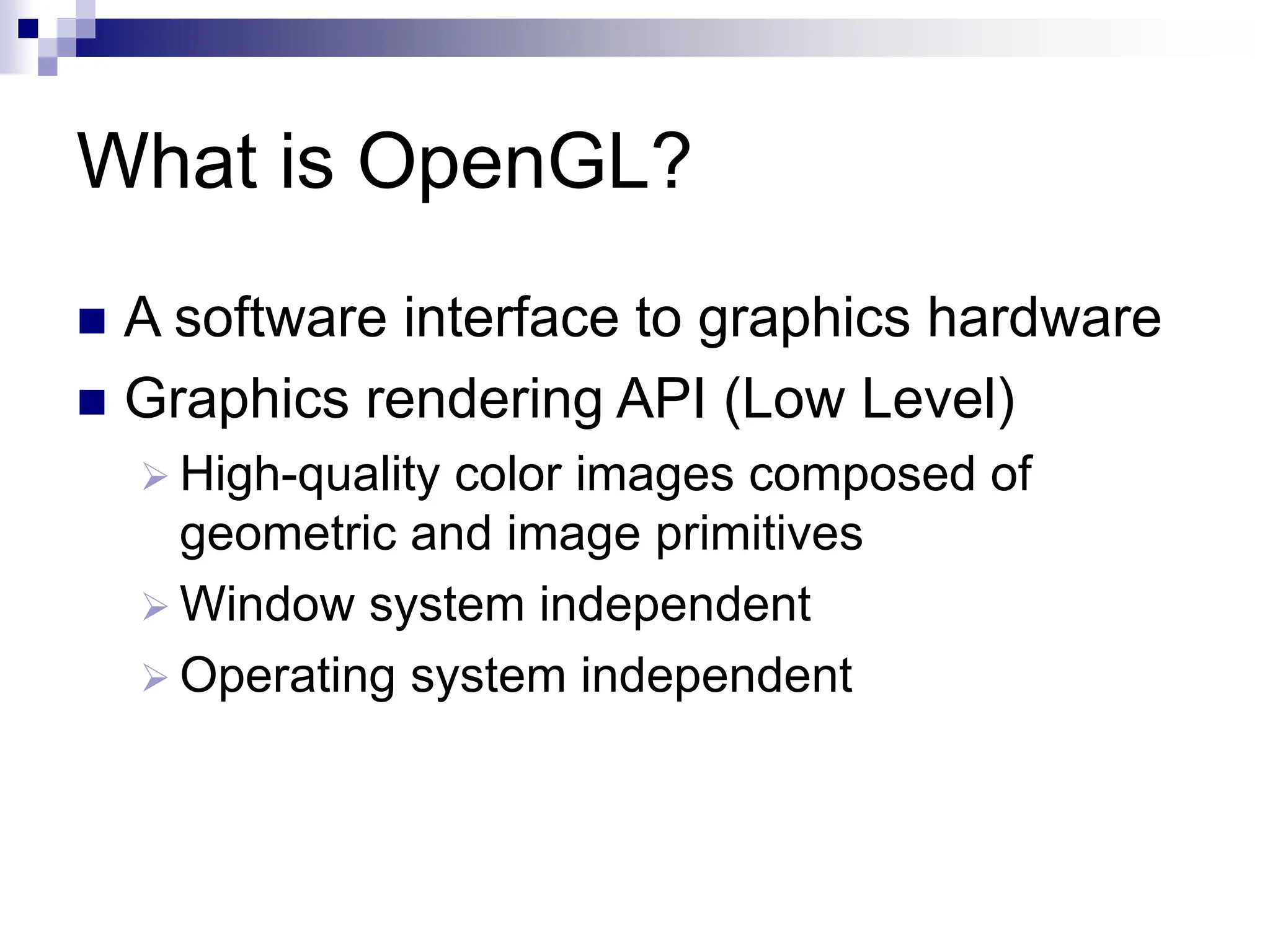
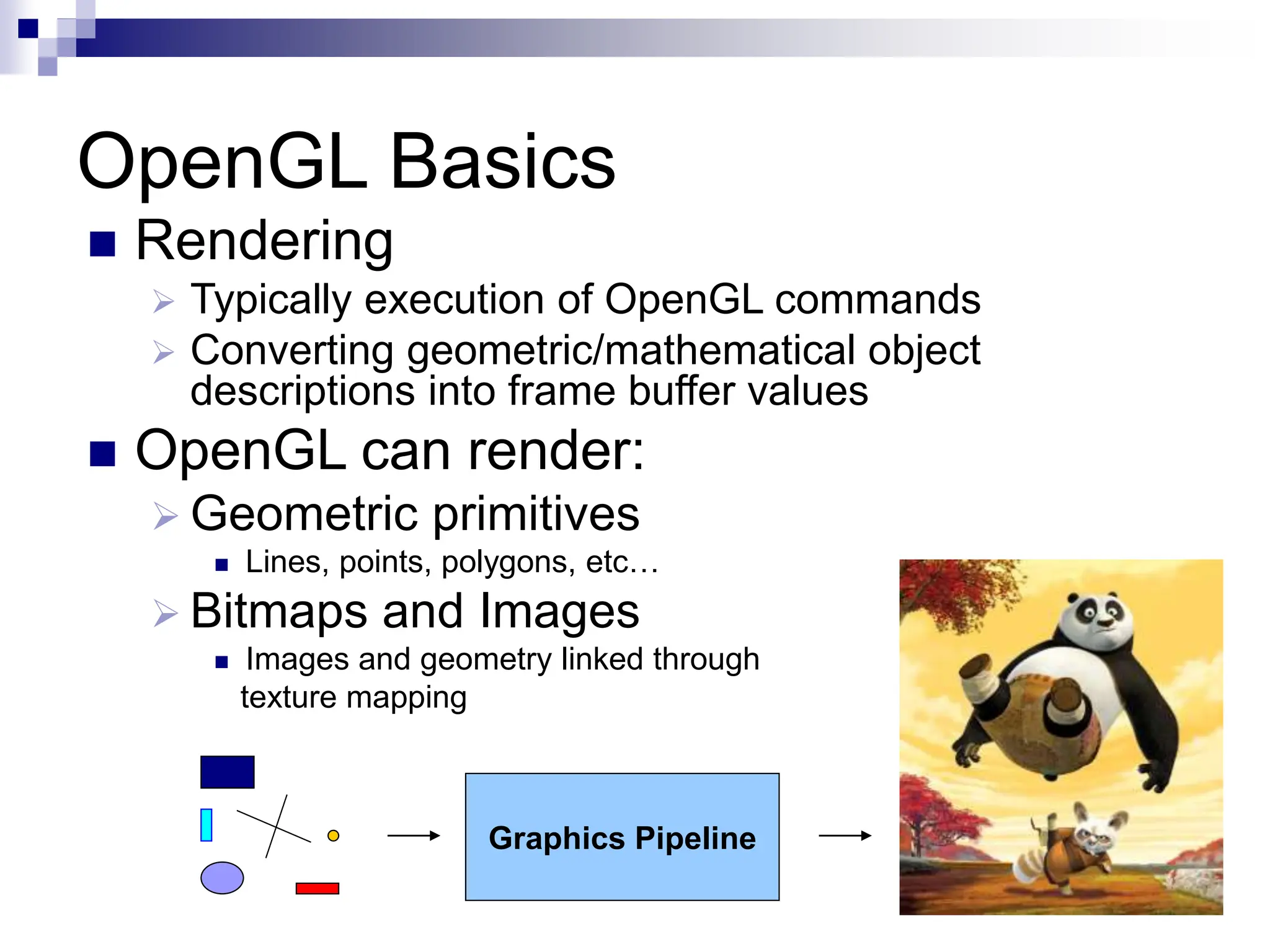
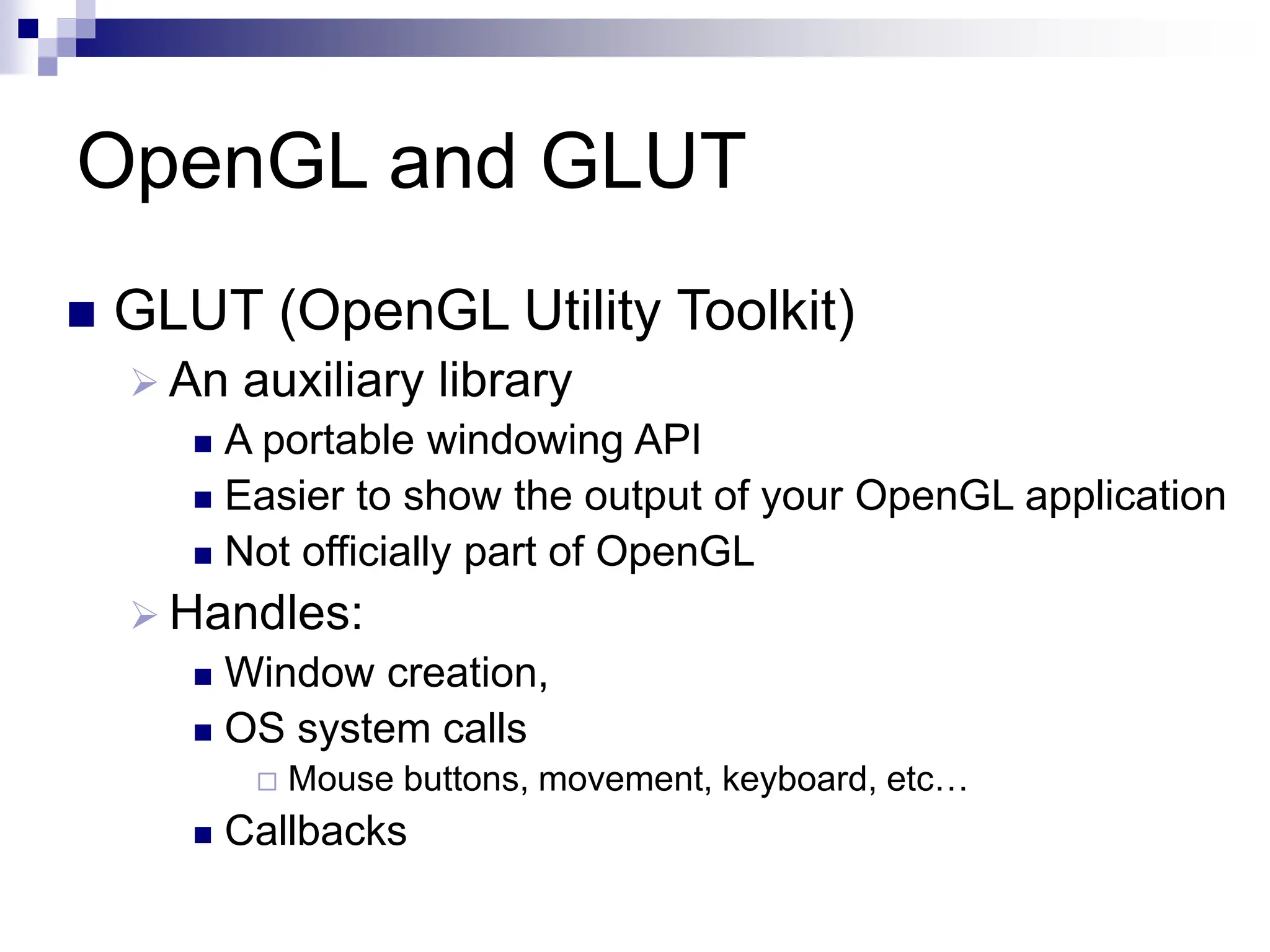
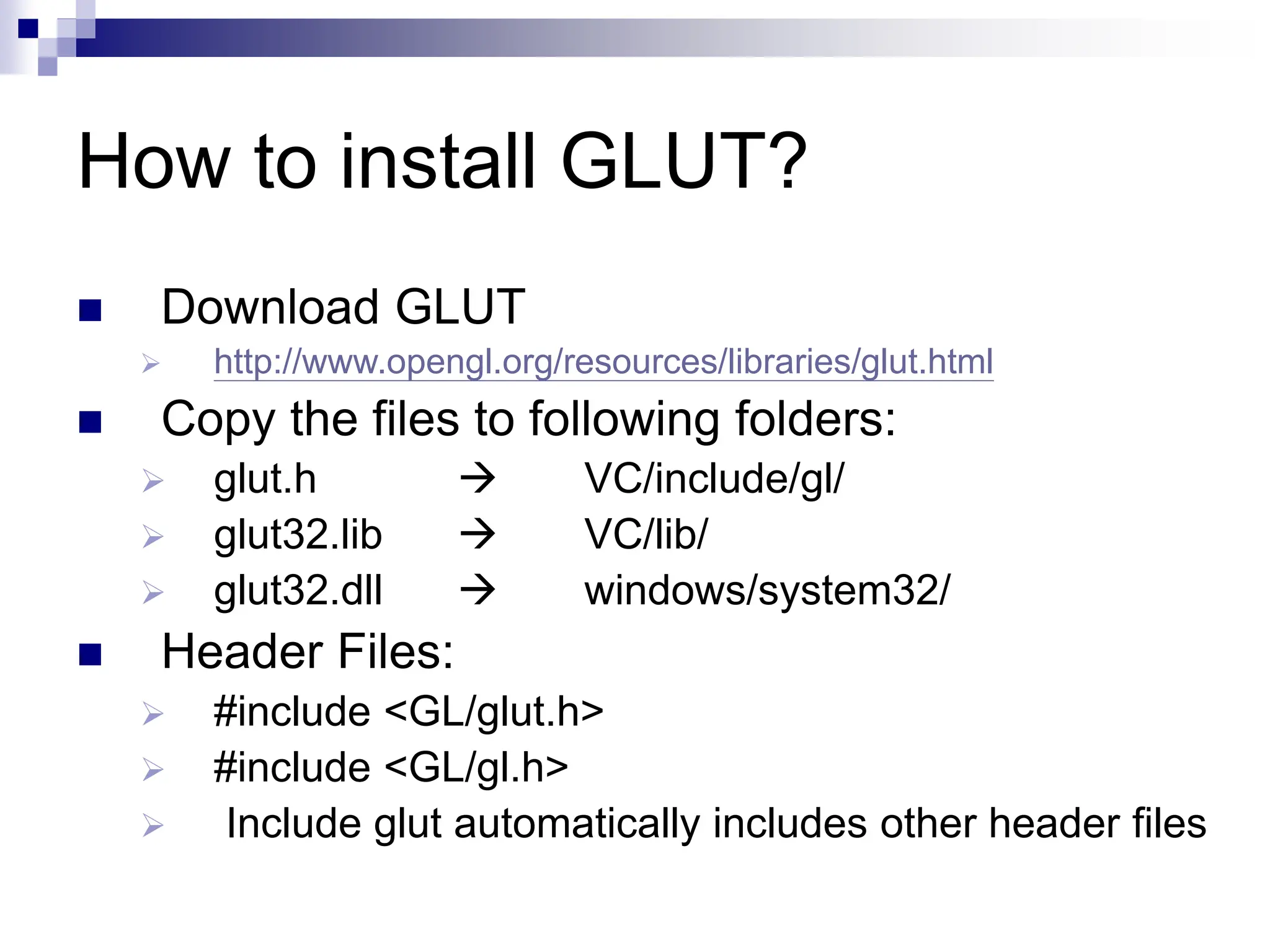
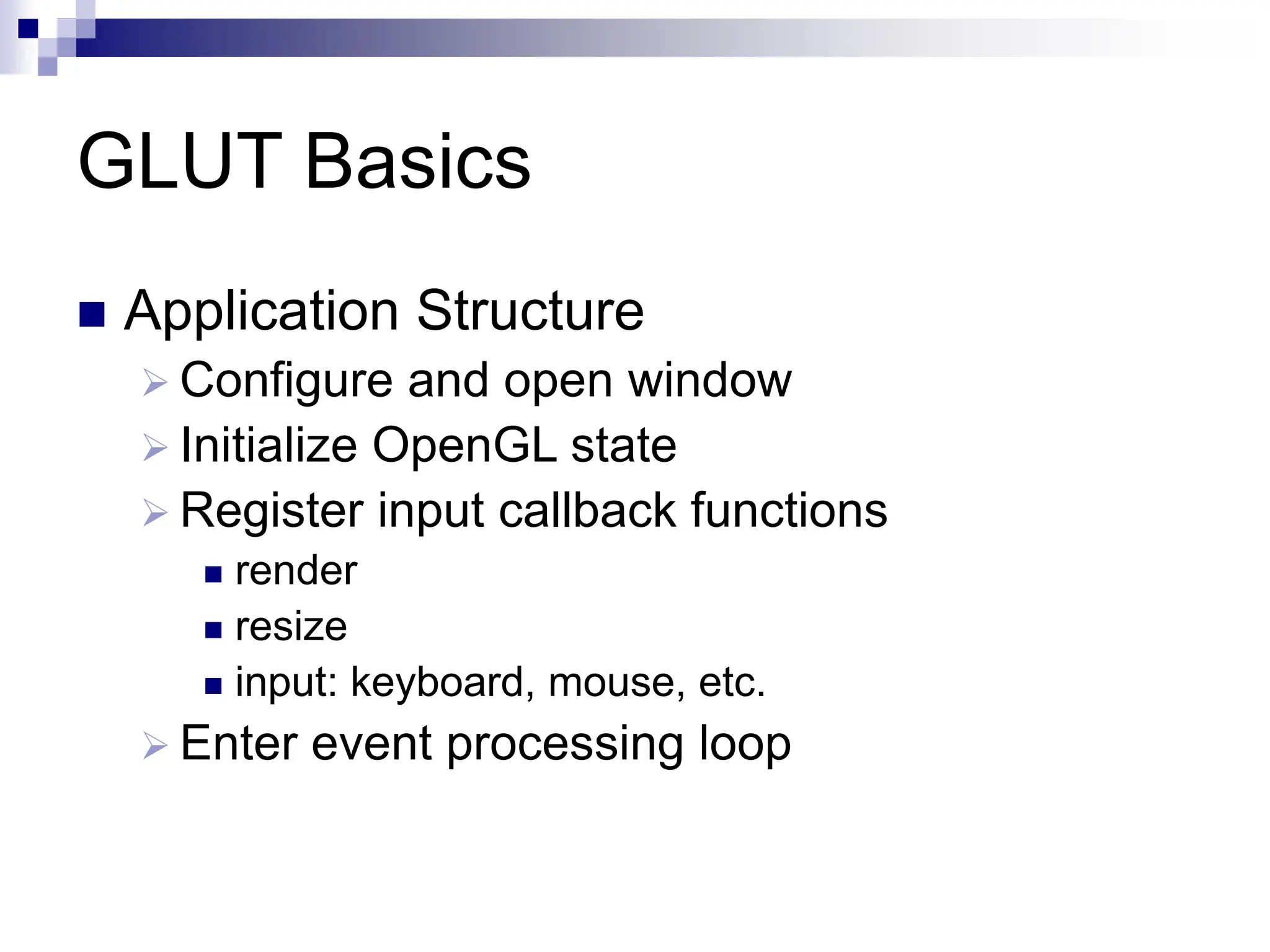
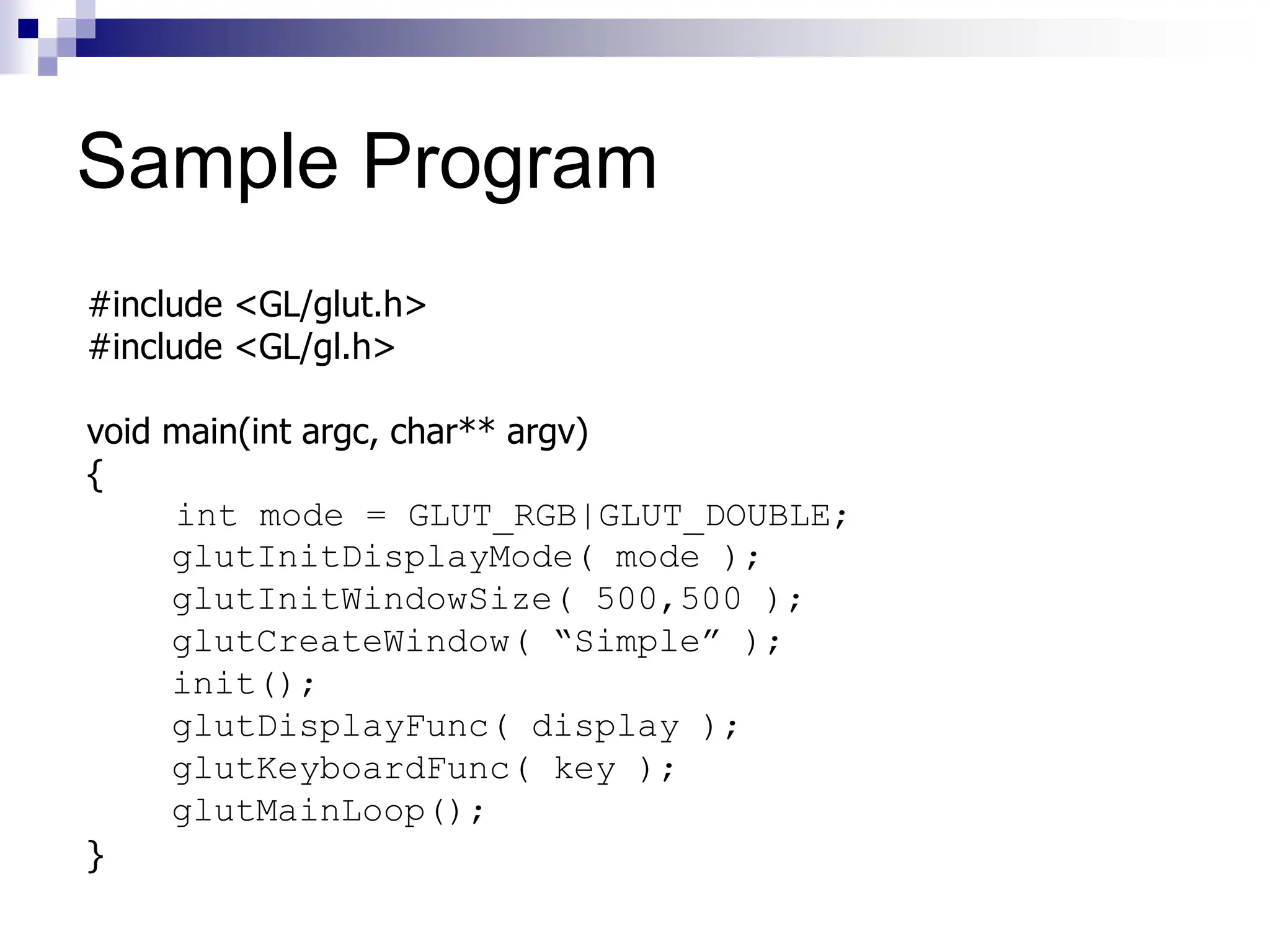
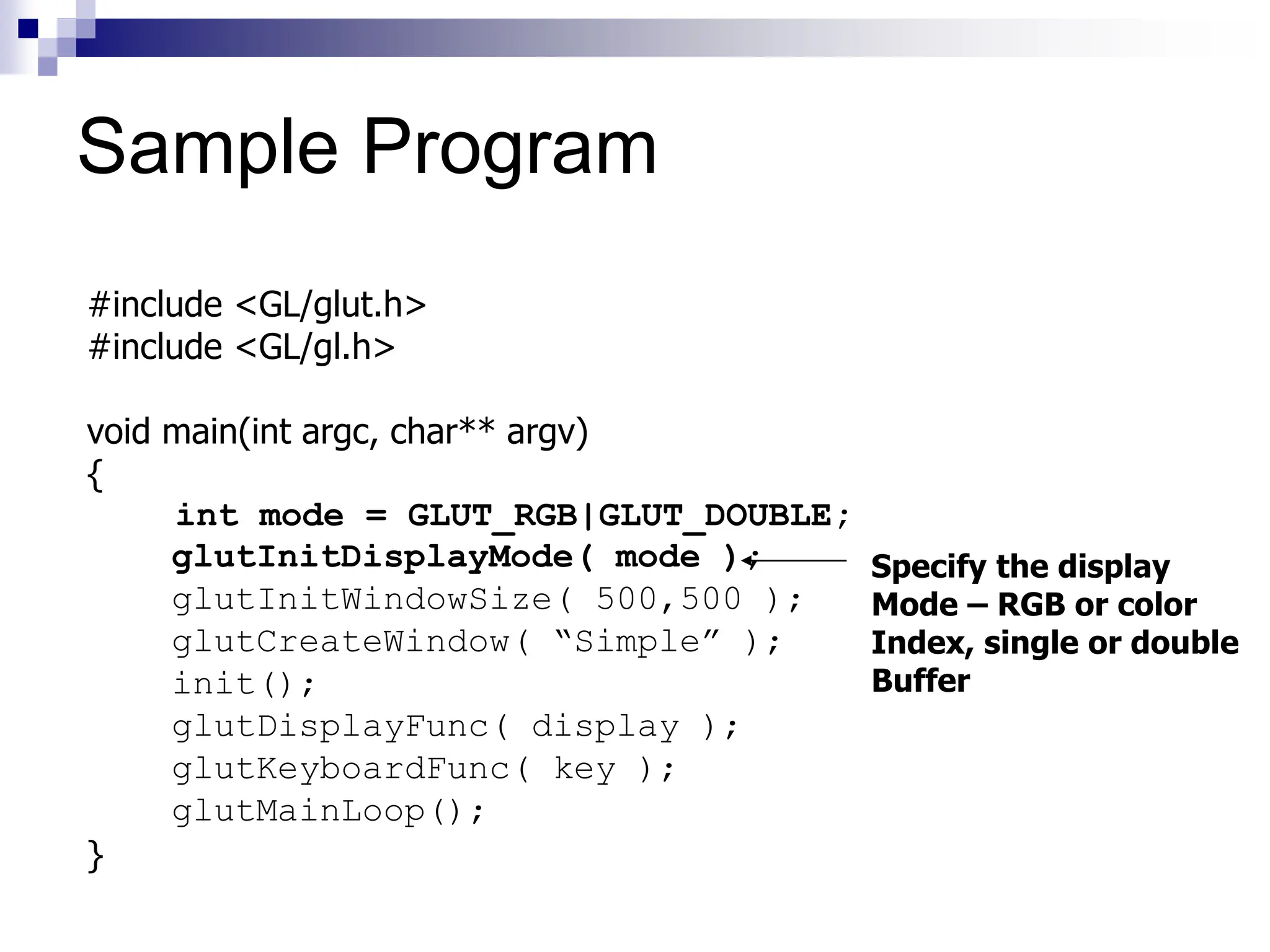
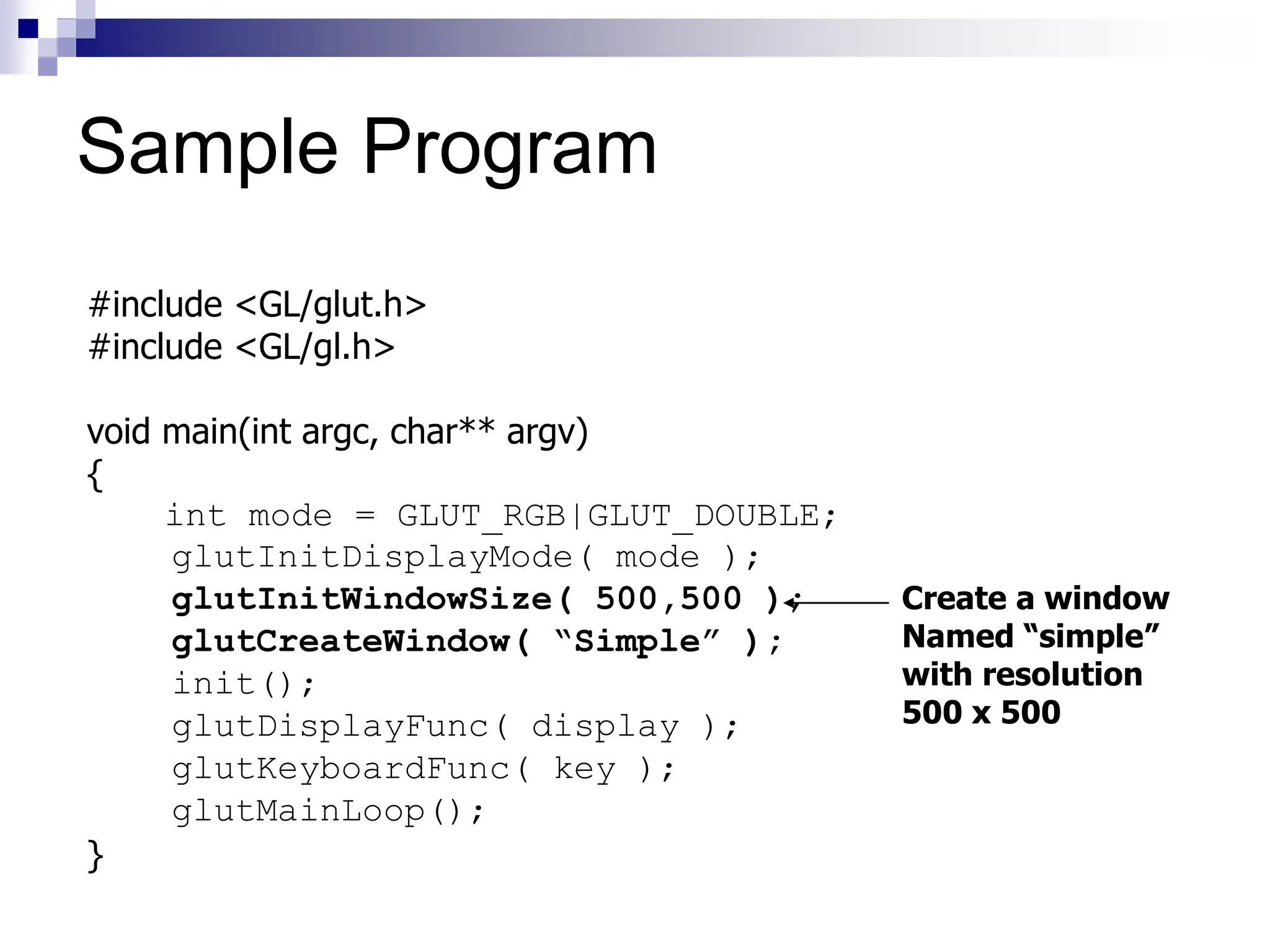
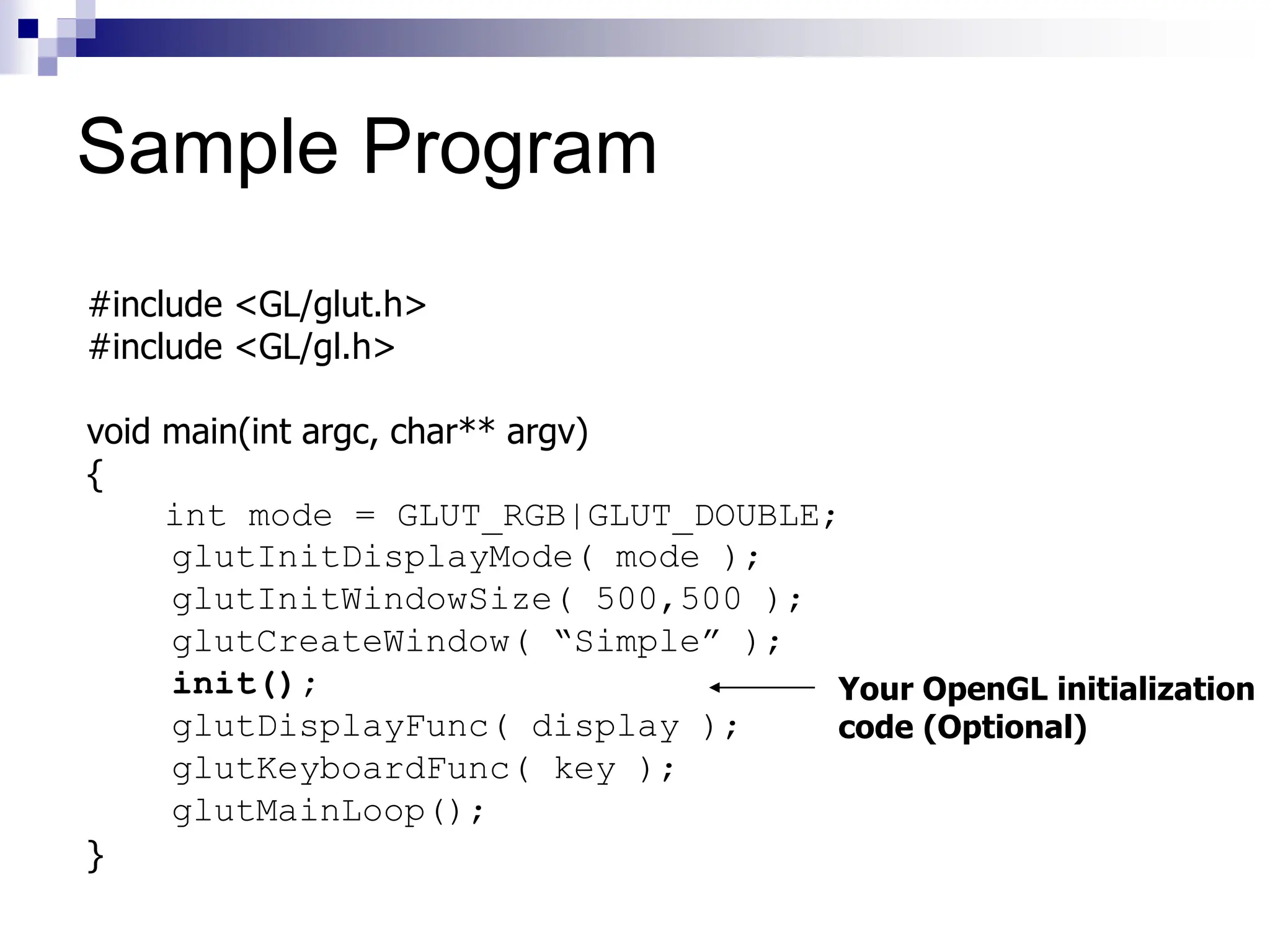
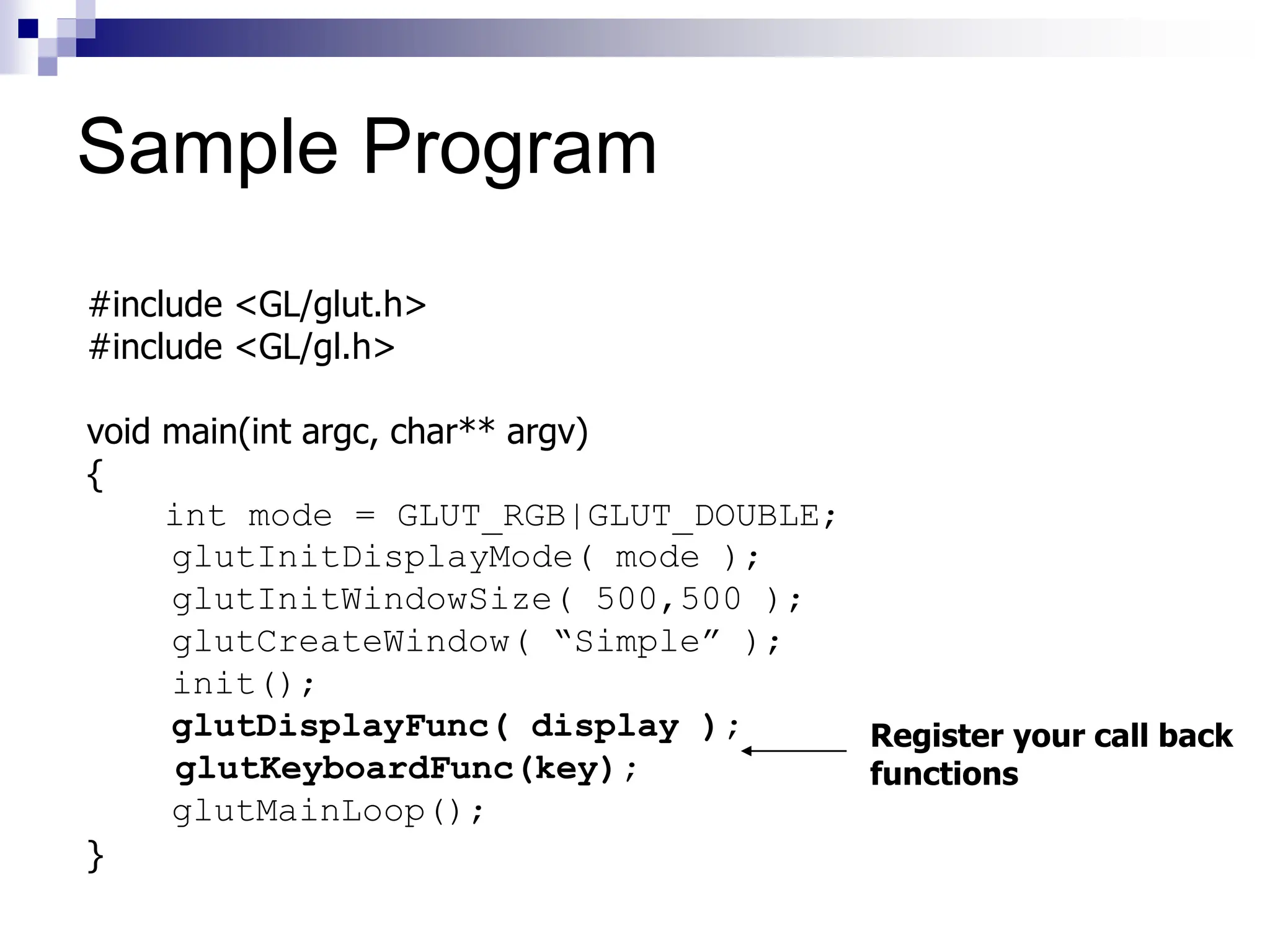
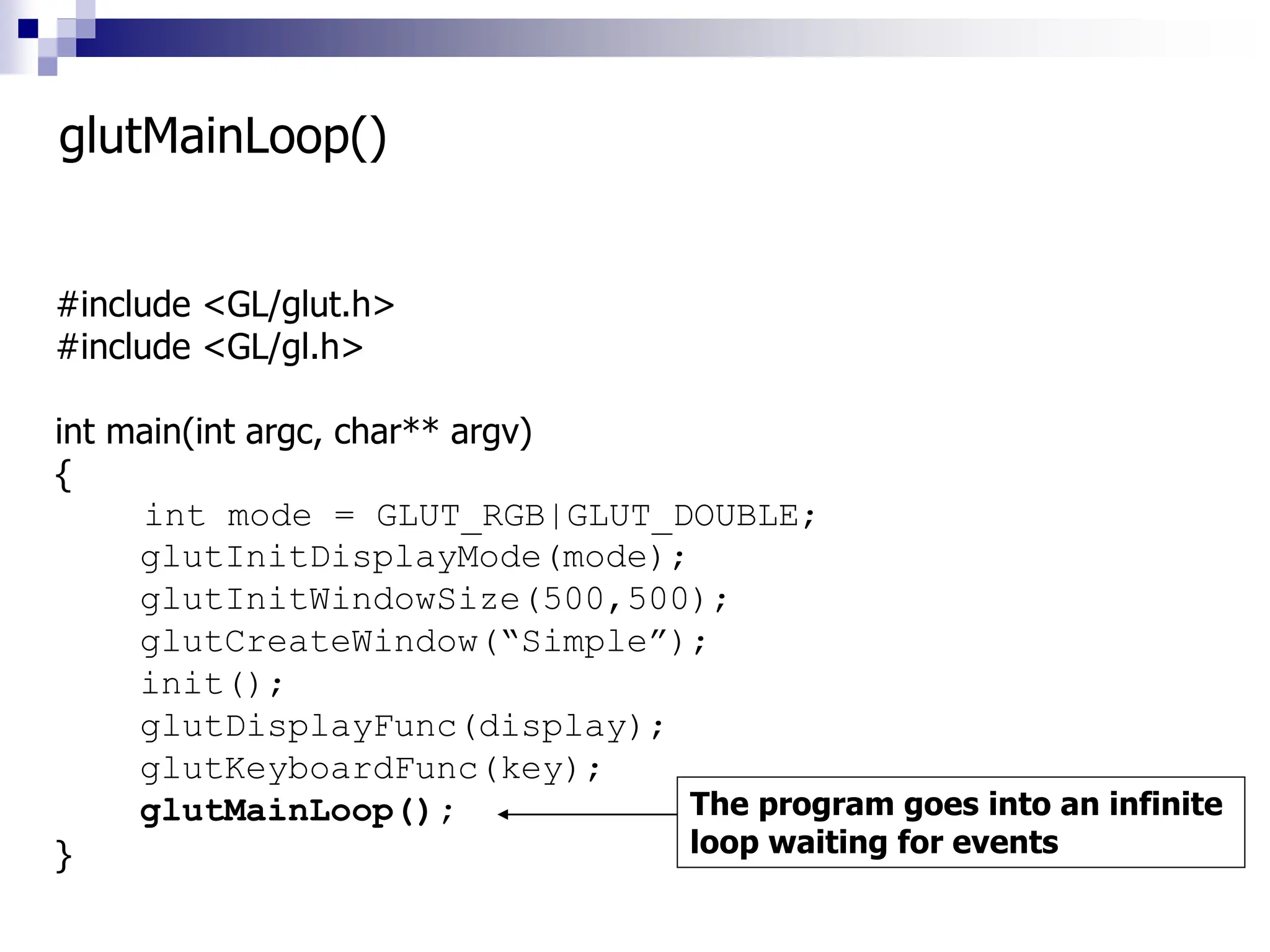
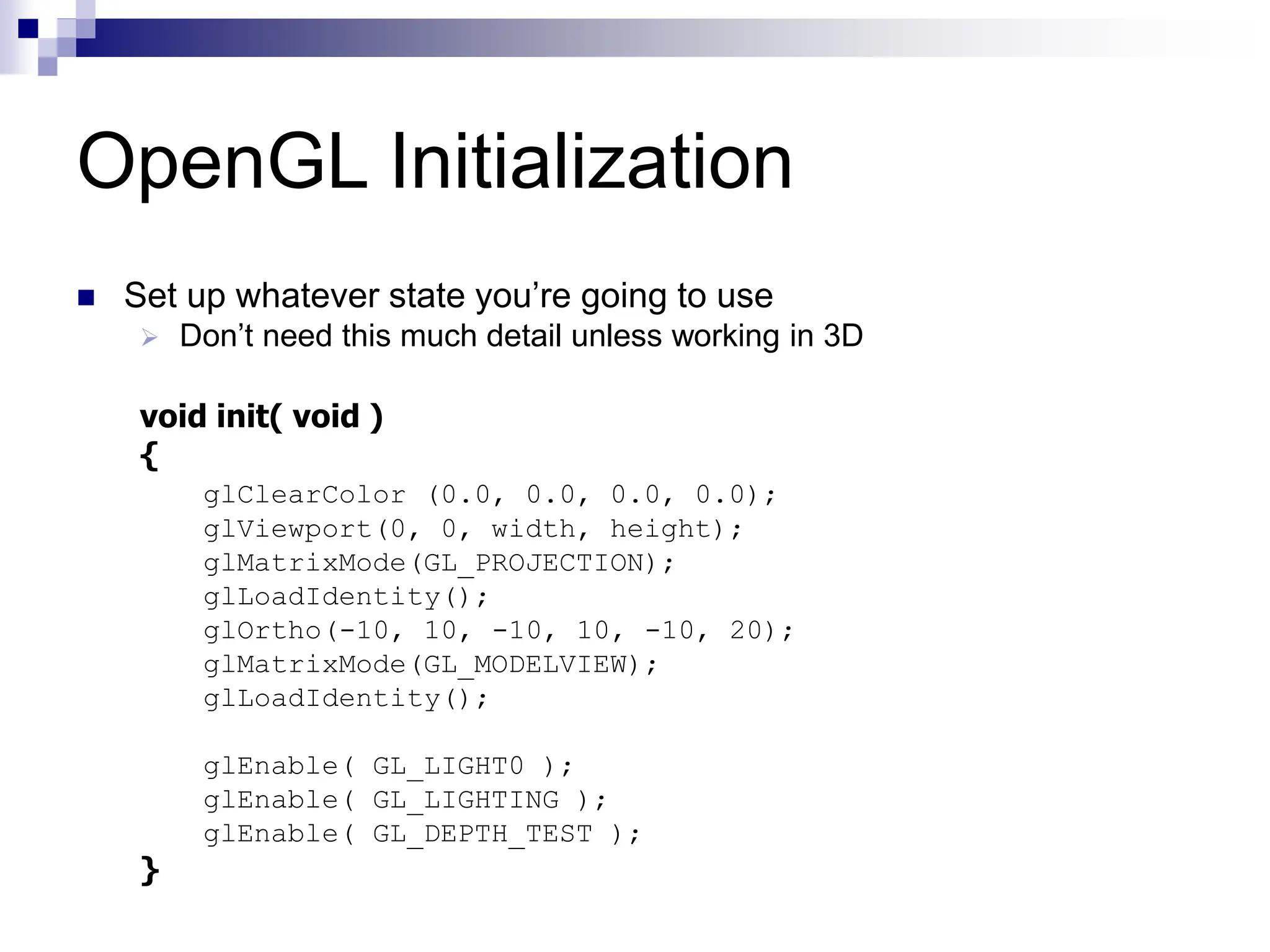
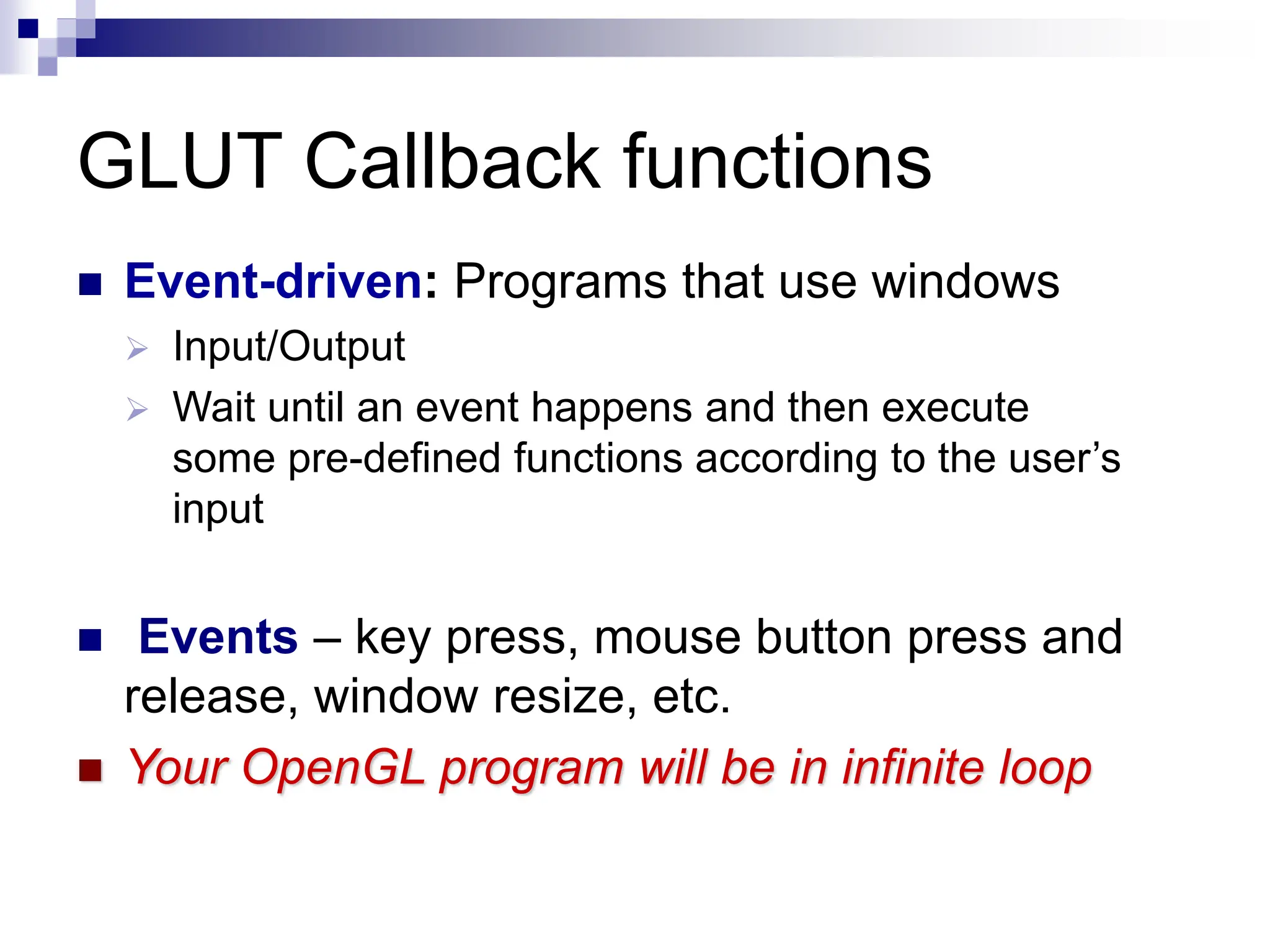
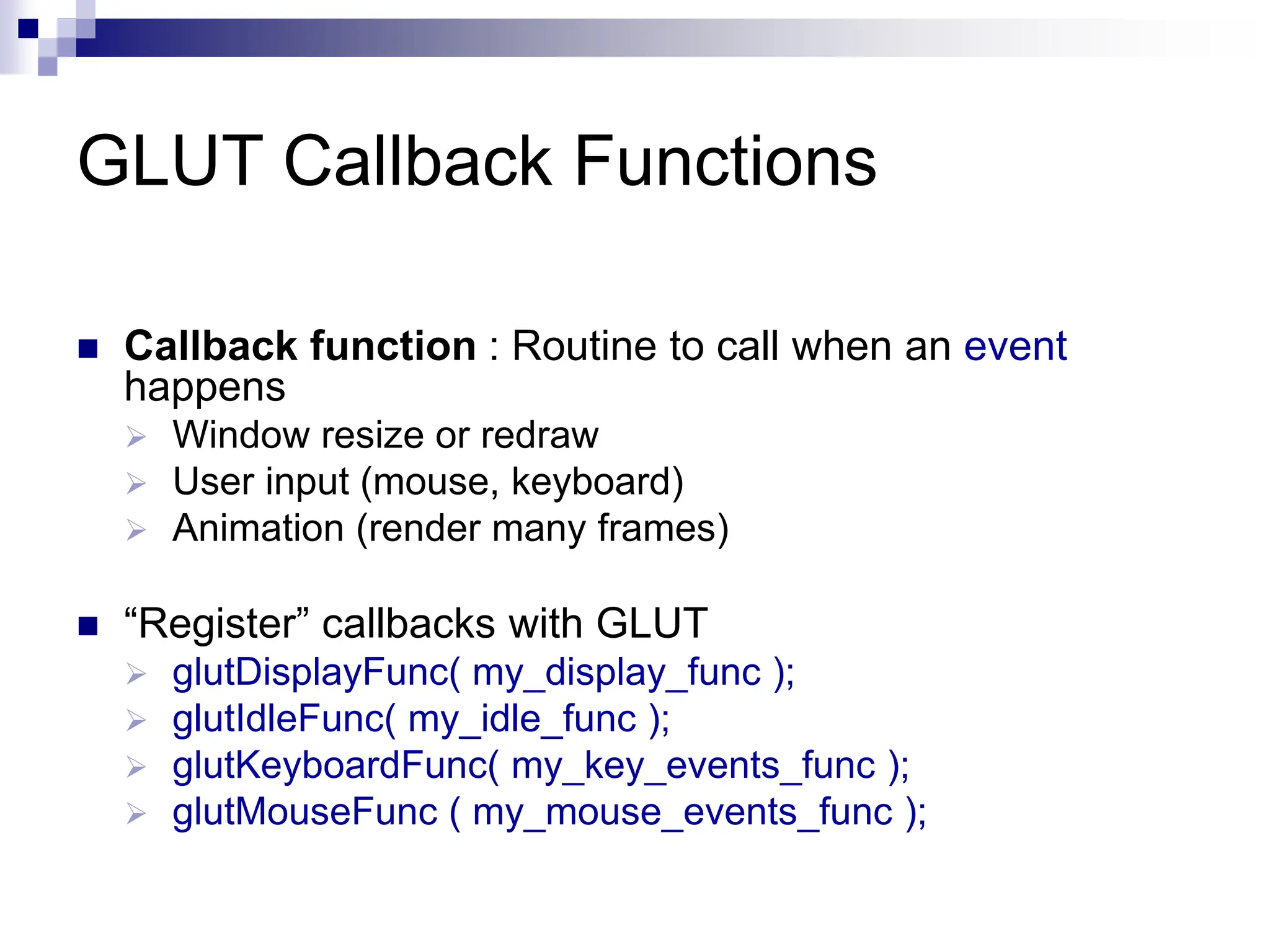
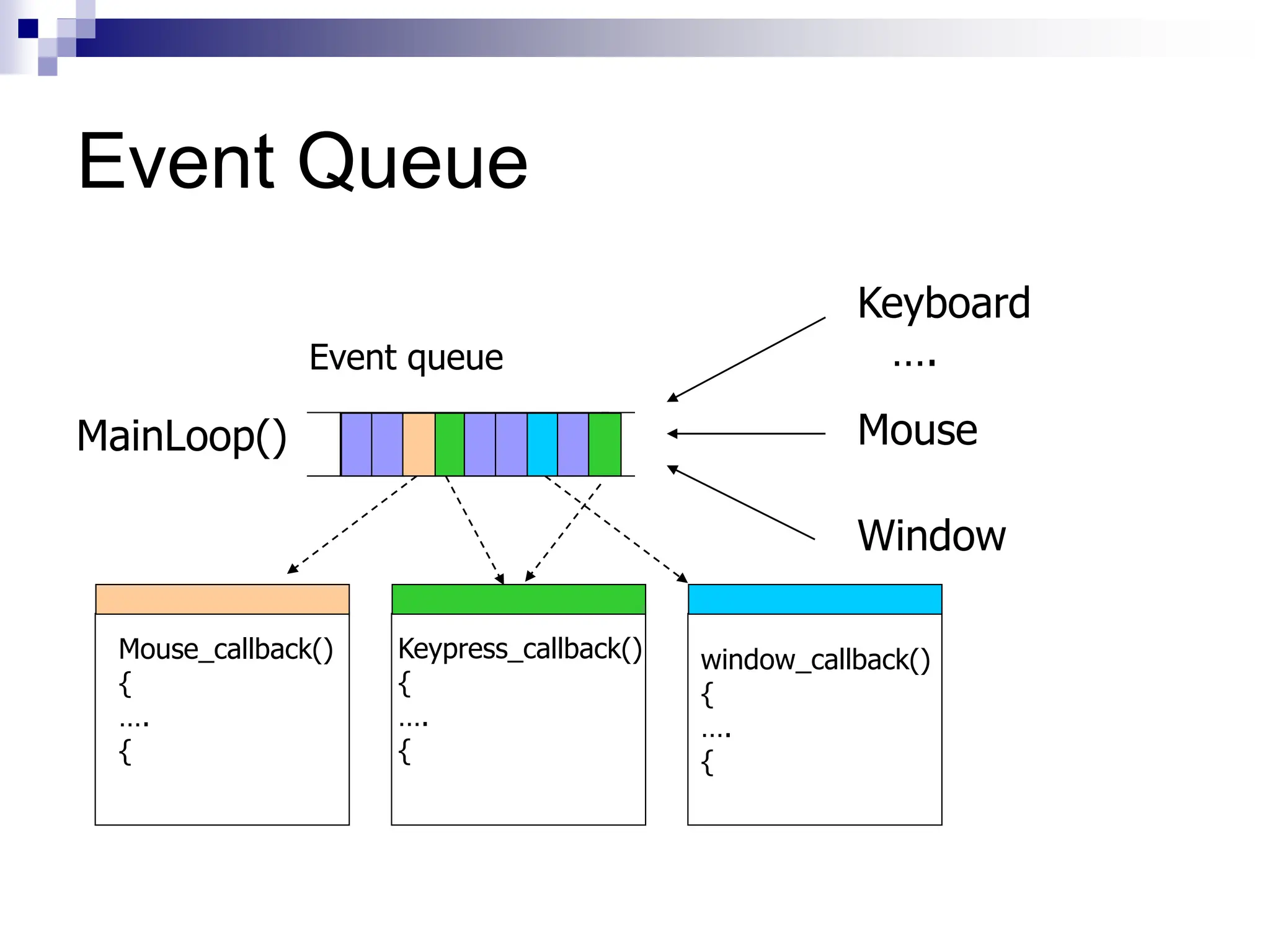
![Rendering Callback
Callback function where all our drawing is done
Every GLUT program must have a display callback
glutDisplayFunc( my_display_func ); /* this part is in main.c */
void my_display_func (void )
{
glClear( GL_COLOR_BUFFER_BIT );
glBegin( GL_TRIANGLE );
glVertex3fv( v[0] );
glVertex3fv( v[1] );
glVertex3fv( v[2] );
glEnd();
glFlush();
}](https://image.slidesharecdn.com/introtocomputergraphics-231015095634-ee037dae/75/Intro-to-Computer-Graphics-ppt-17-2048.jpg)
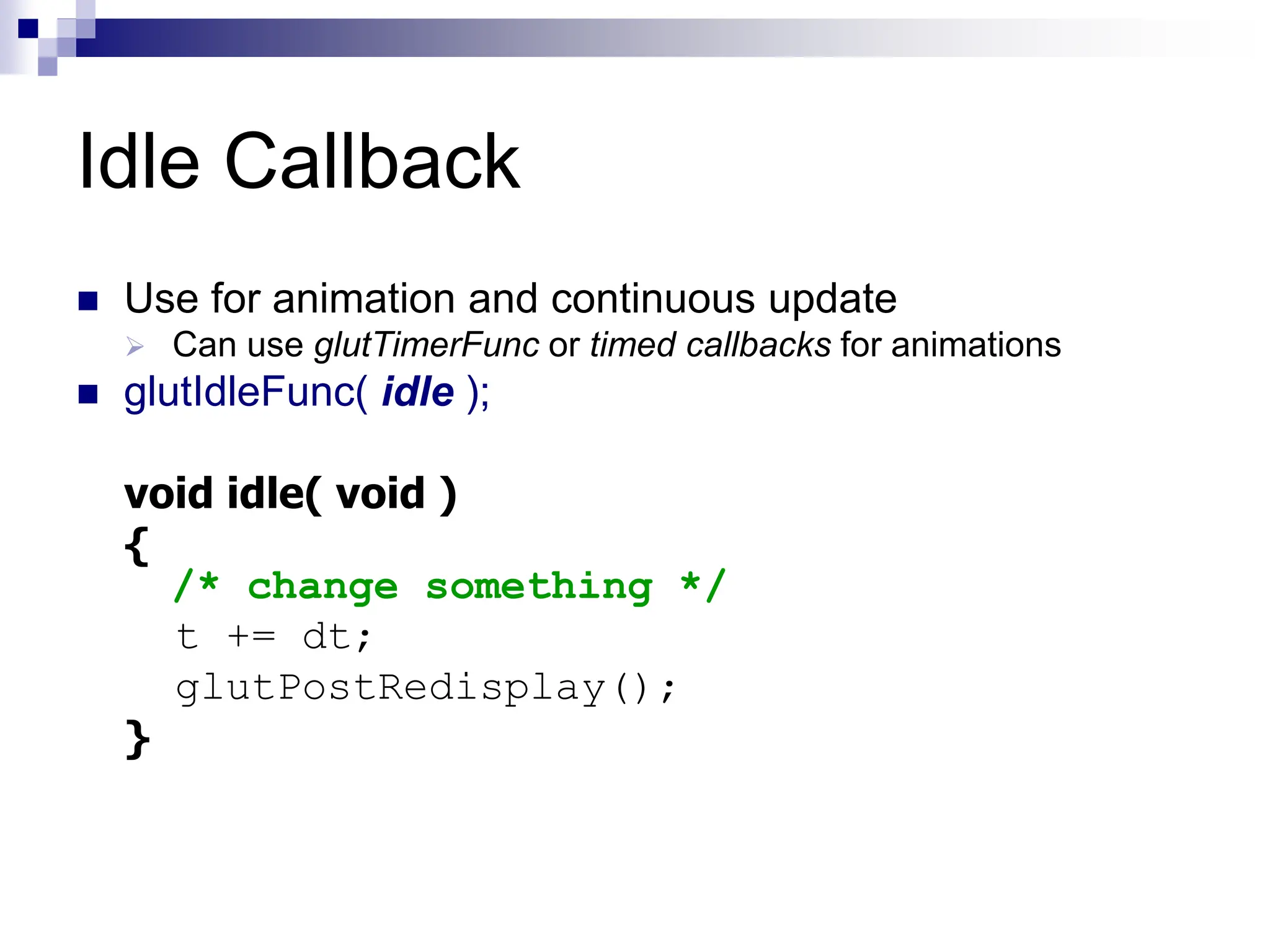
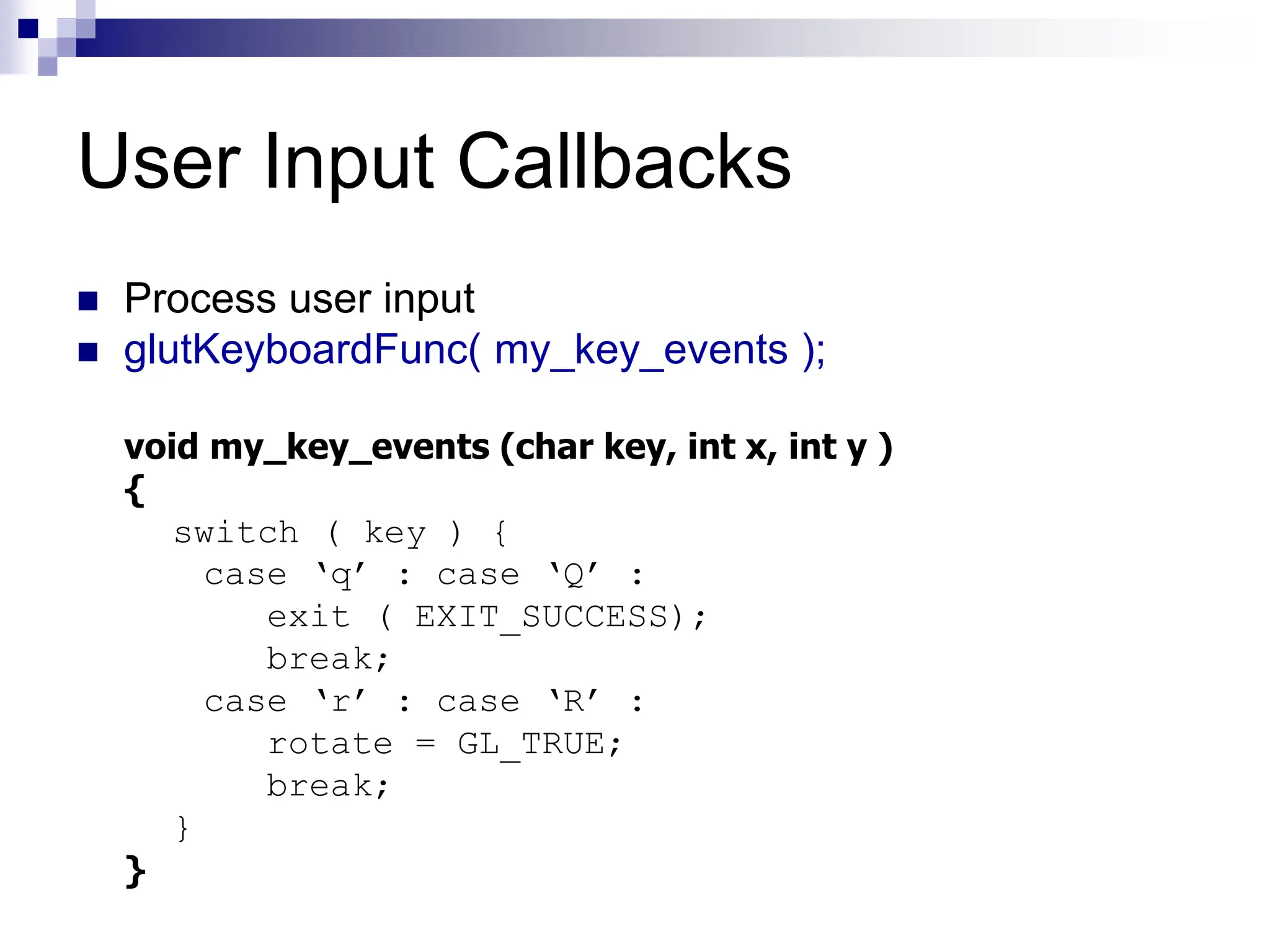
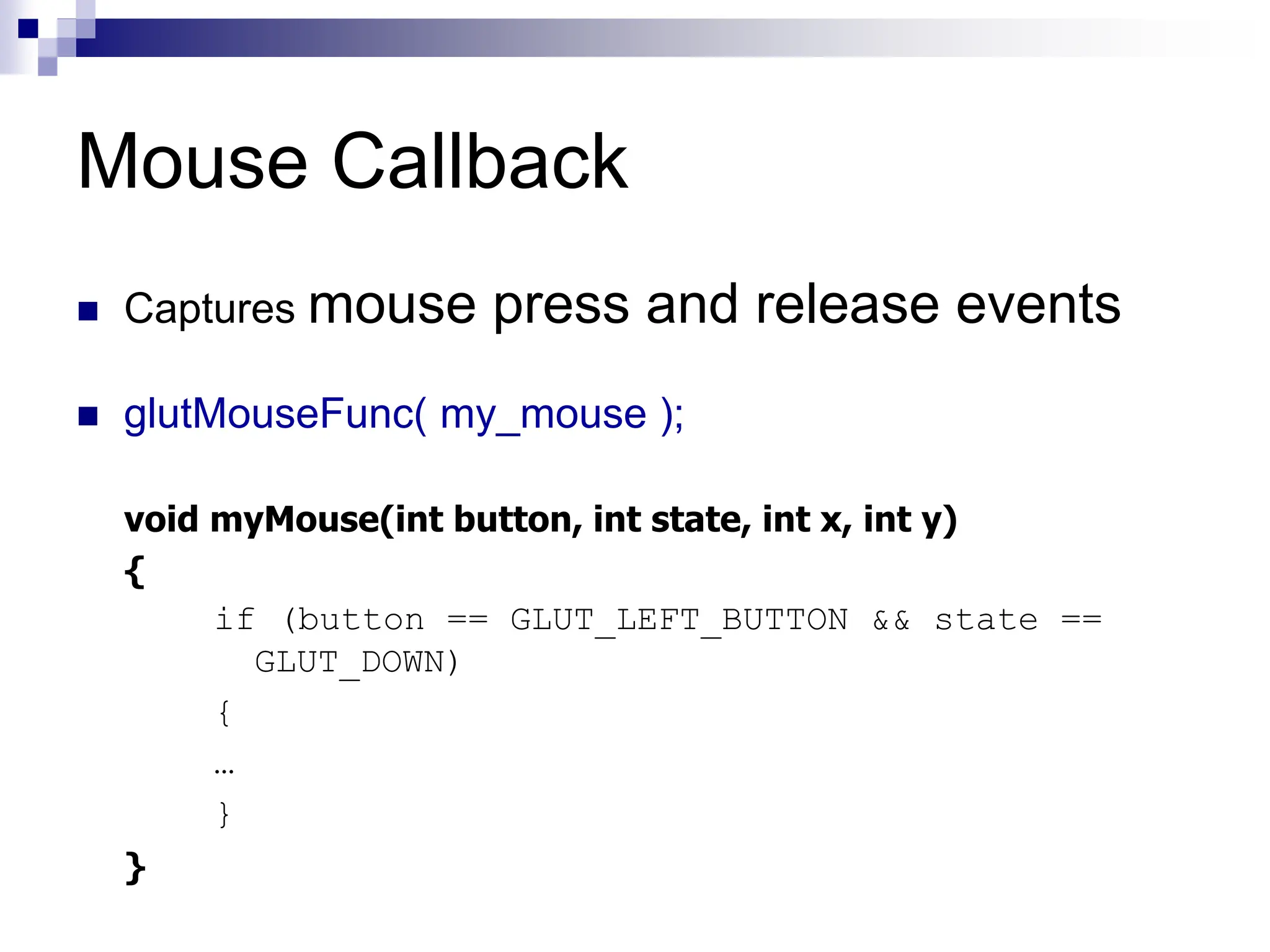
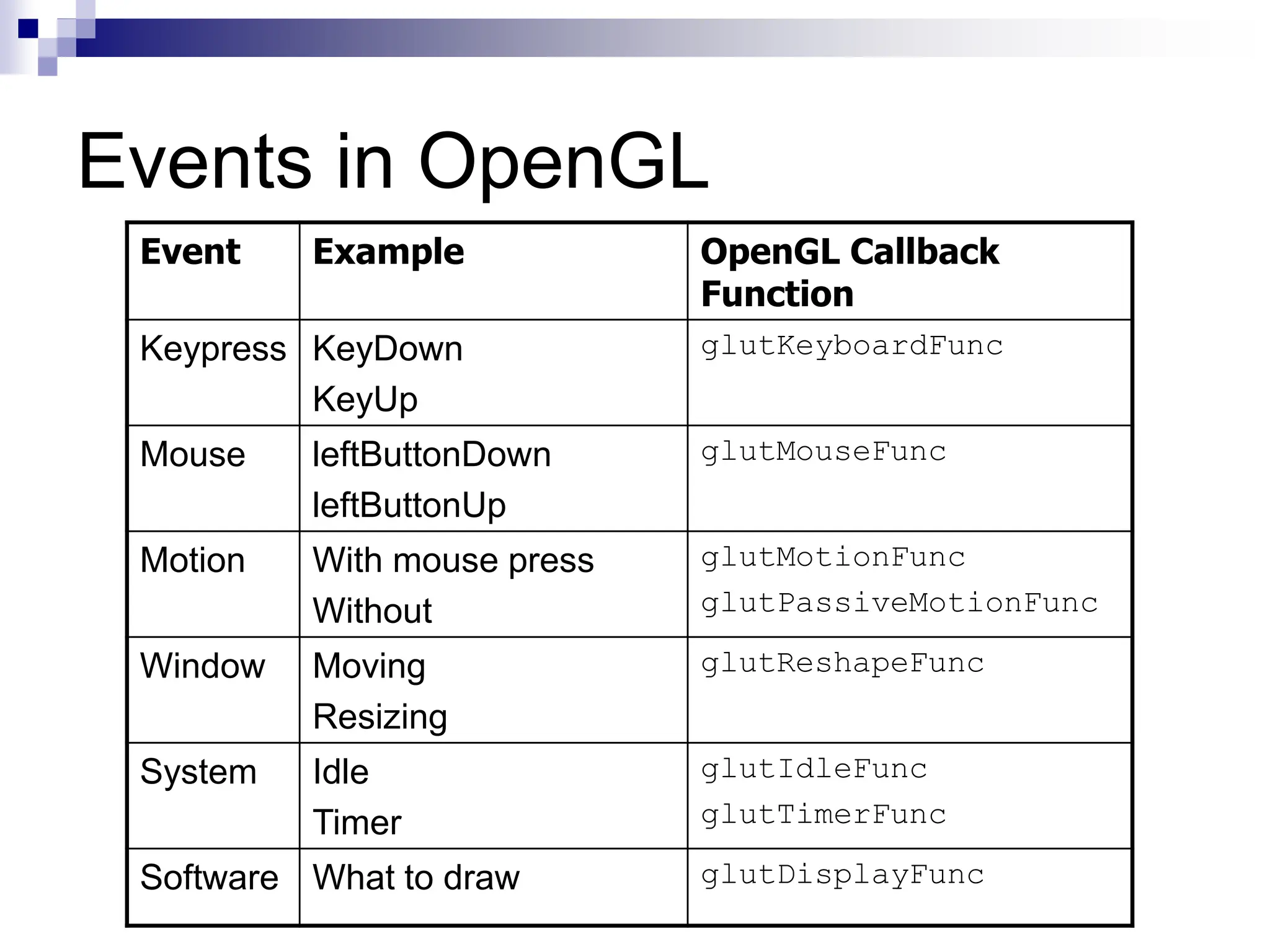
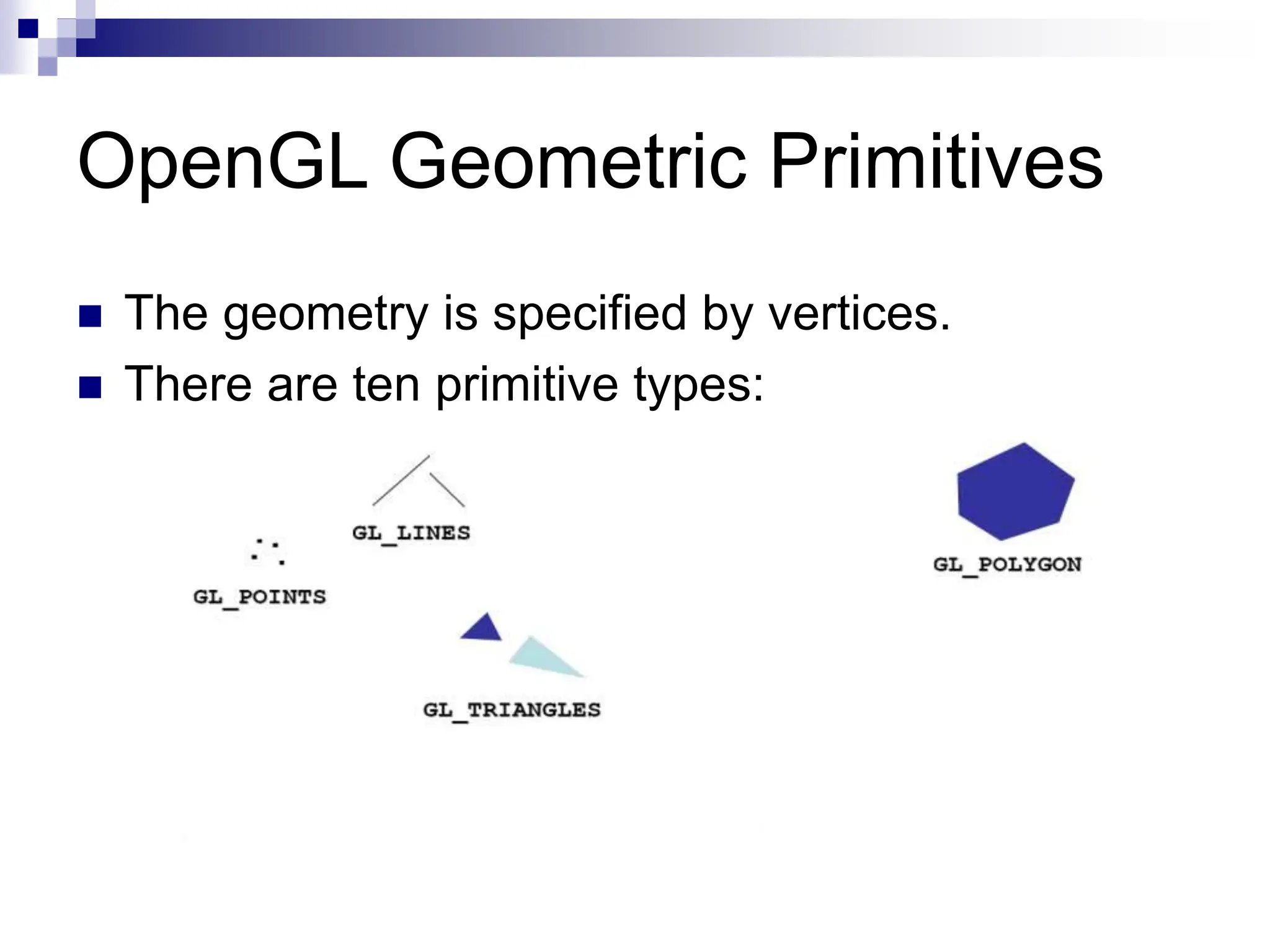
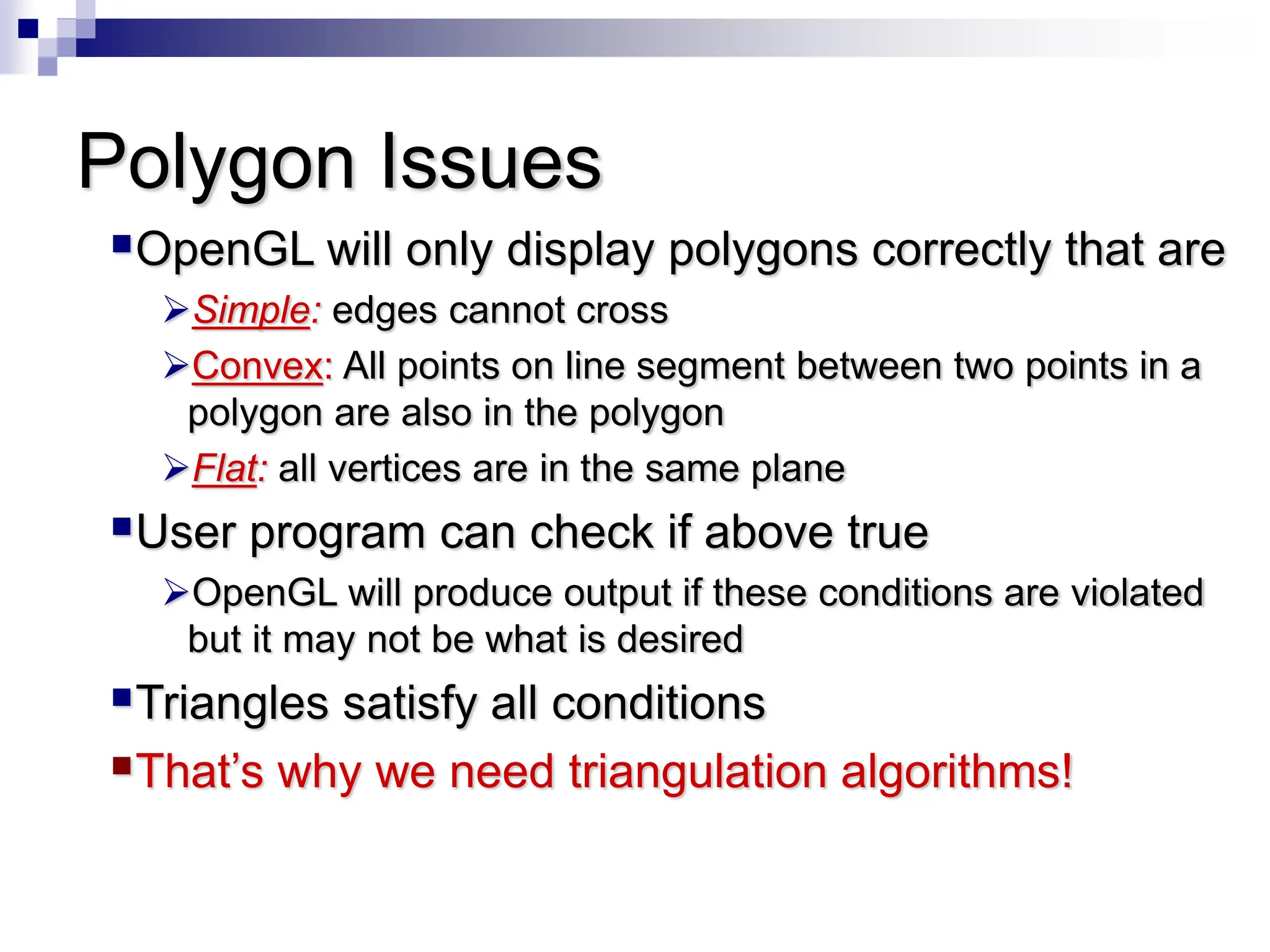
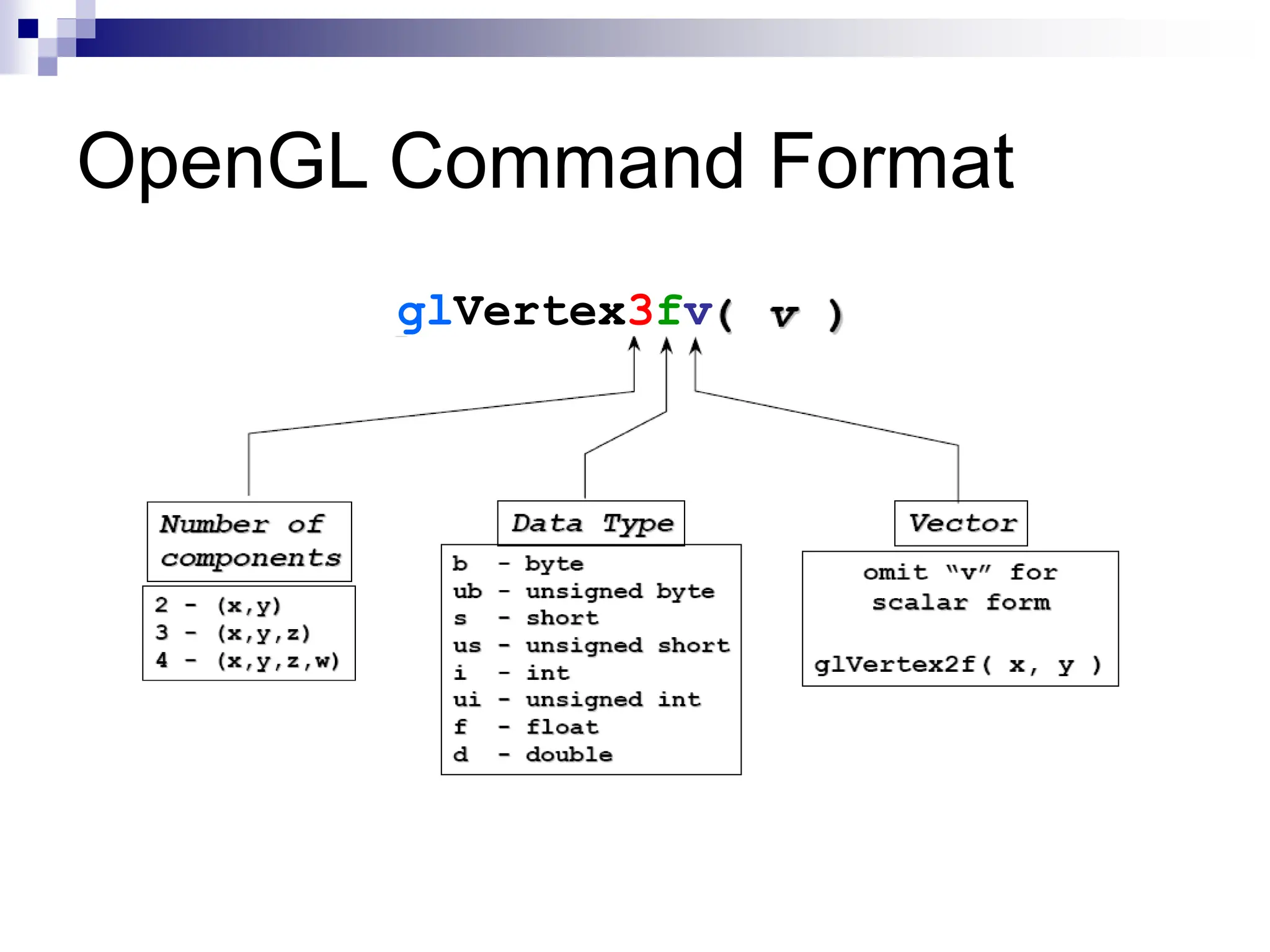
![Vertices and Primitives
Primitives are specified using
glBegin( primType );
…
glEnd();
primType determines how vertices are combined
GLfloat red, green, blue;
Glfloat coords[nVerts][3];
/*Initialize coords and colors somewhere in program*/
glBegin( primType );
for ( i = 0; i < nVerts; ++i ) {
glColor3f( red, green, blue );
glVertex3fv( coords[i] );
}
glEnd();](https://image.slidesharecdn.com/introtocomputergraphics-231015095634-ee037dae/75/Intro-to-Computer-Graphics-ppt-25-2048.jpg)
![An Example
void drawParallelogram( GLfloat
color[] )
{
glBegin( GL_QUADS );
glColor3fv( color );
glVertex2f( 0.0, 0.0 );
glVertex2f( 1.0, 0.0 );
glVertex2f( 1.5, 1.118 );
glVertex2f( 0.5, 1.118 );
glEnd();
}](https://image.slidesharecdn.com/introtocomputergraphics-231015095634-ee037dae/75/Intro-to-Computer-Graphics-ppt-26-2048.jpg)
